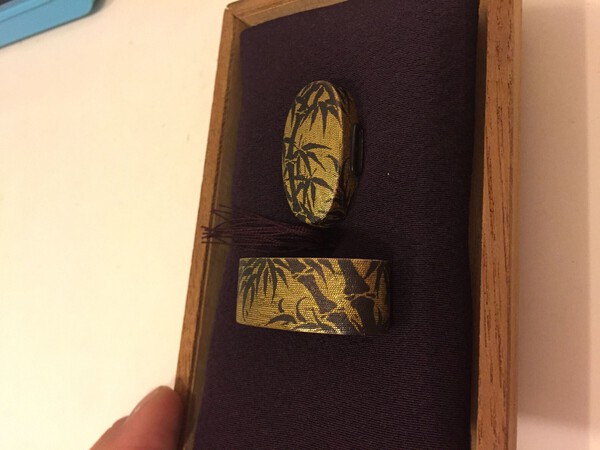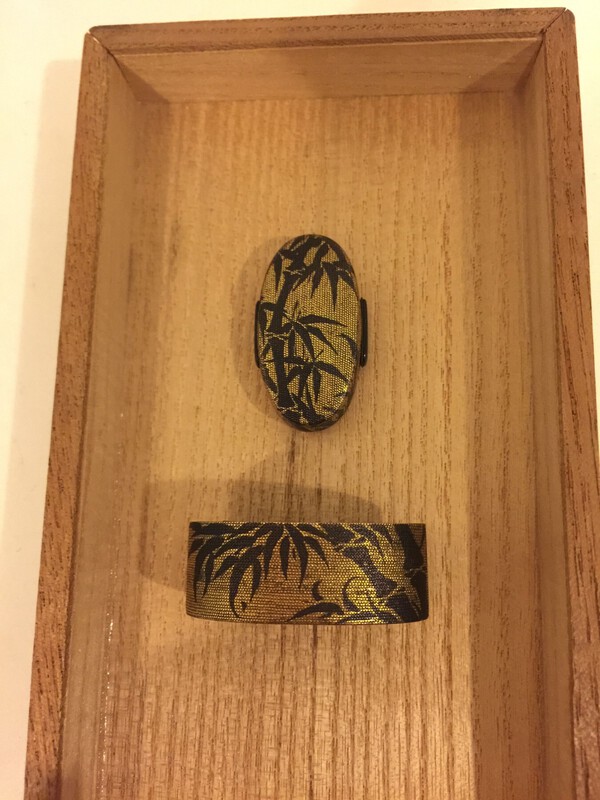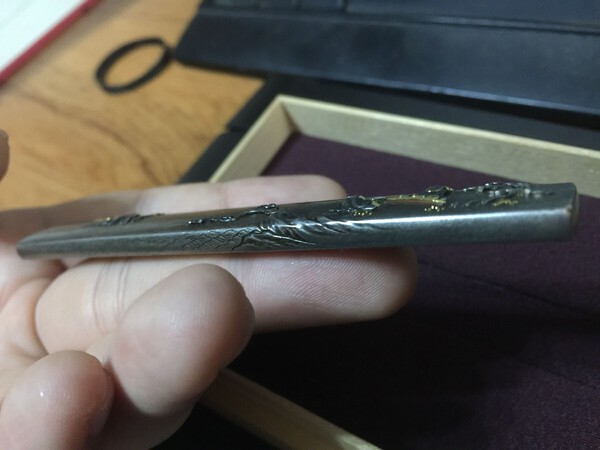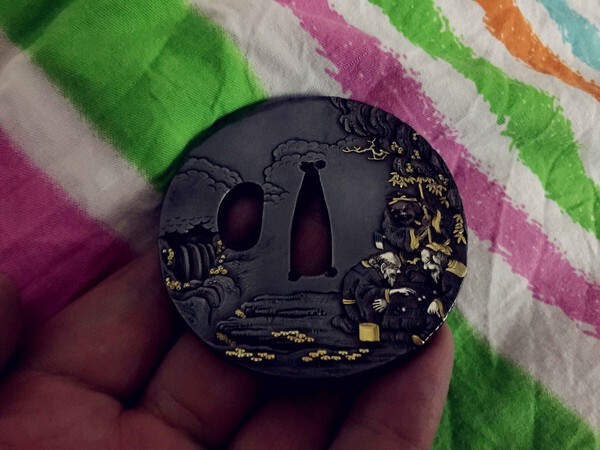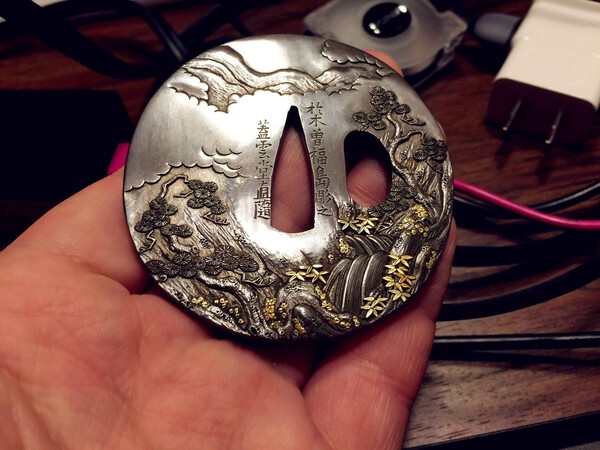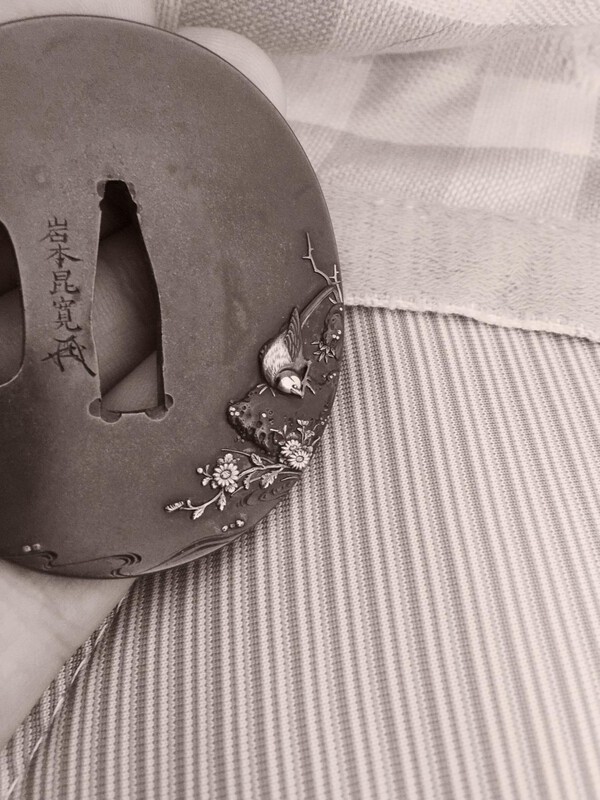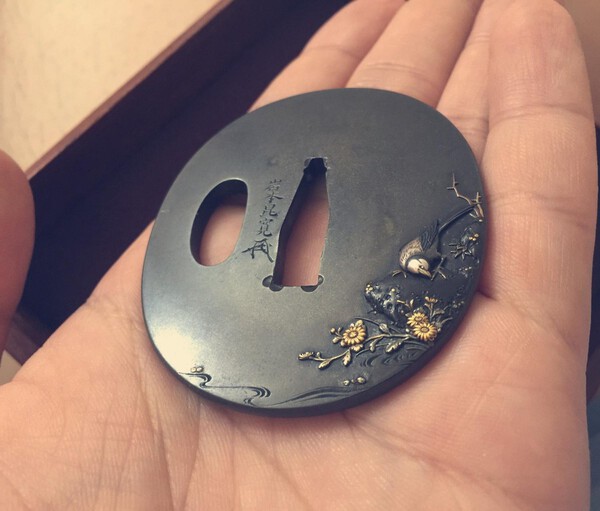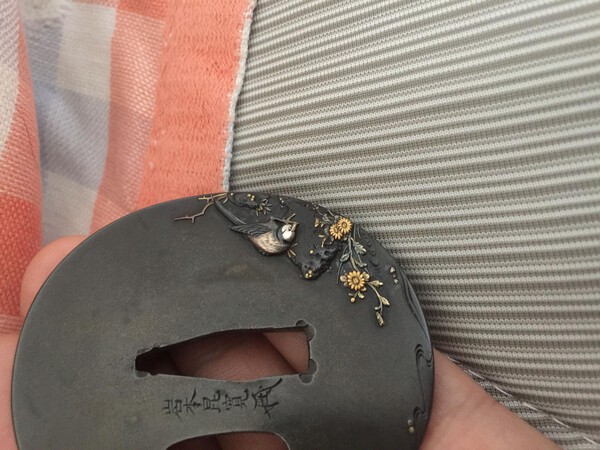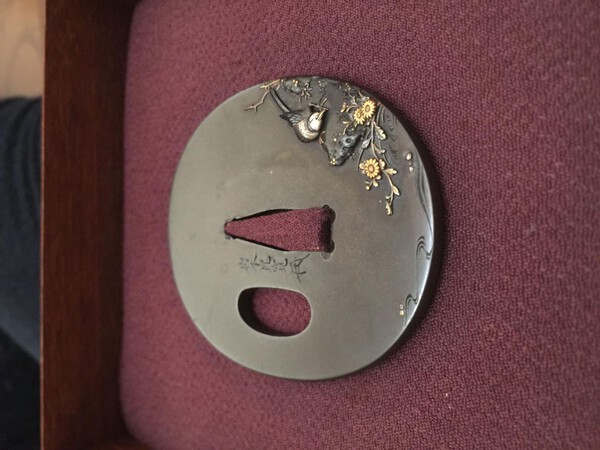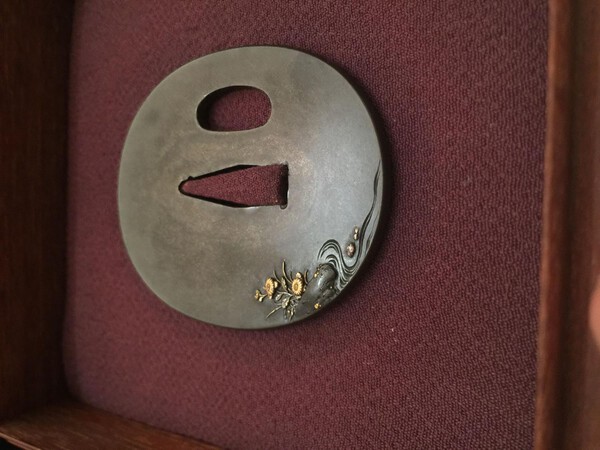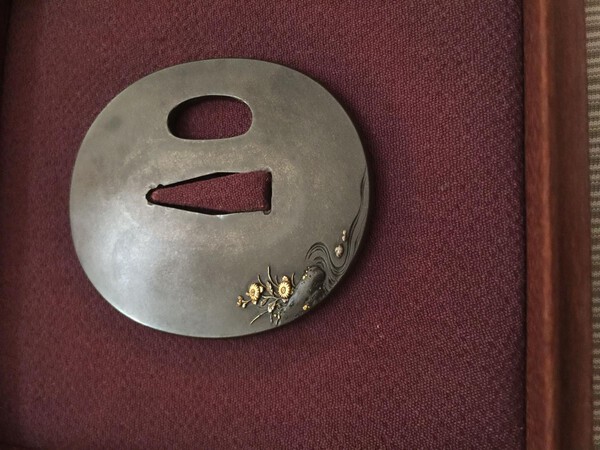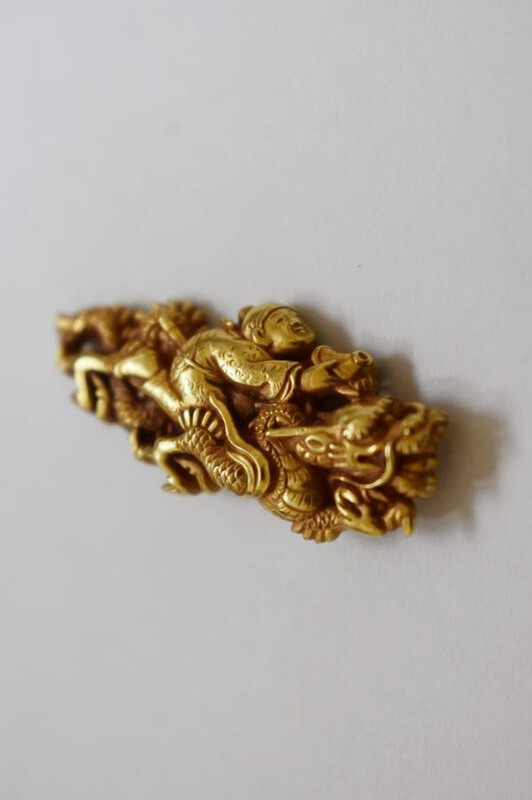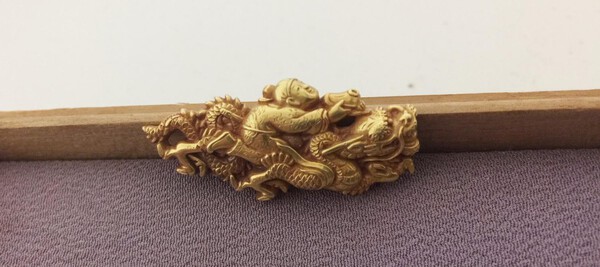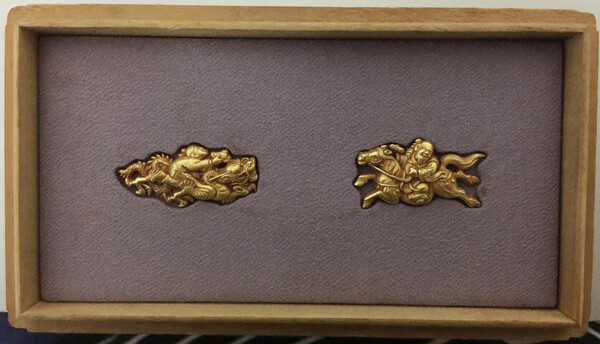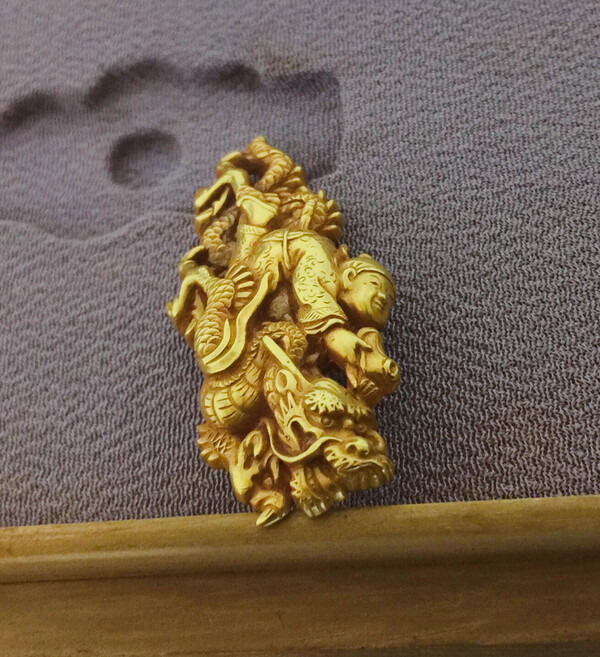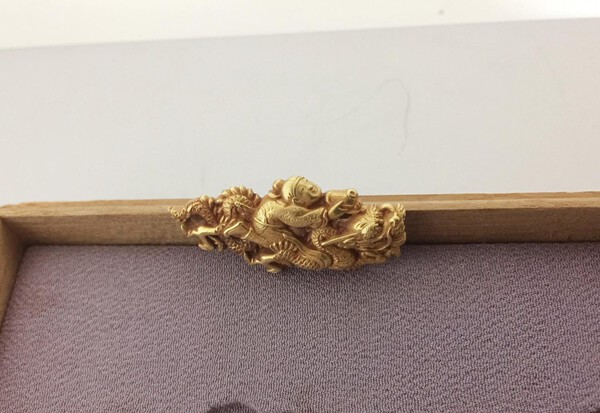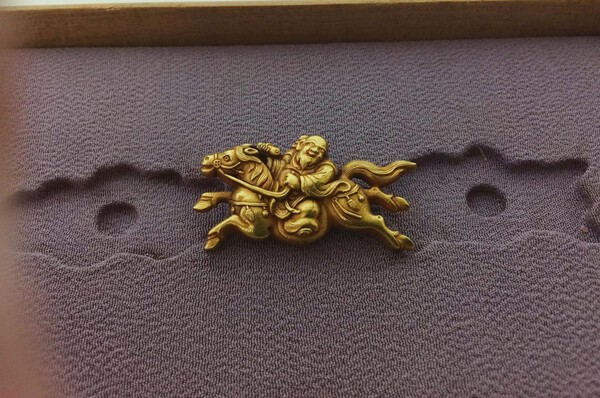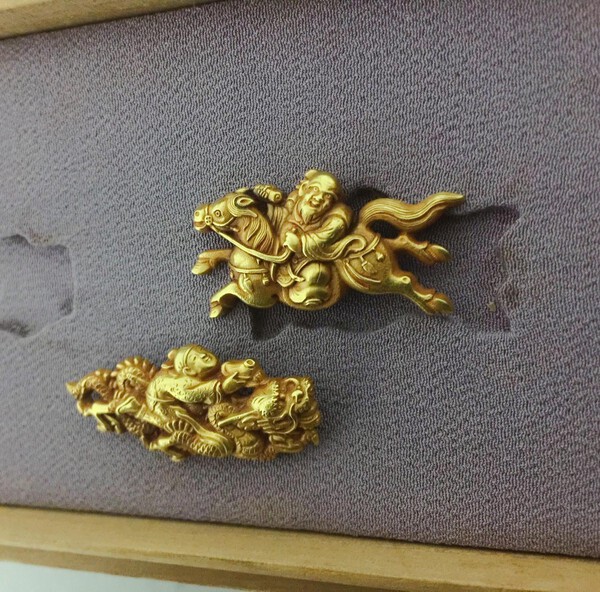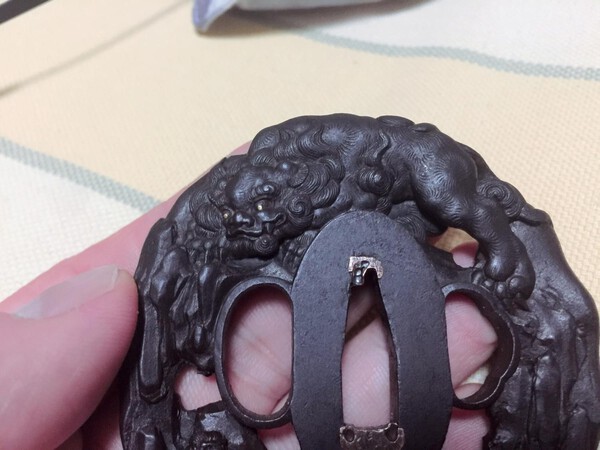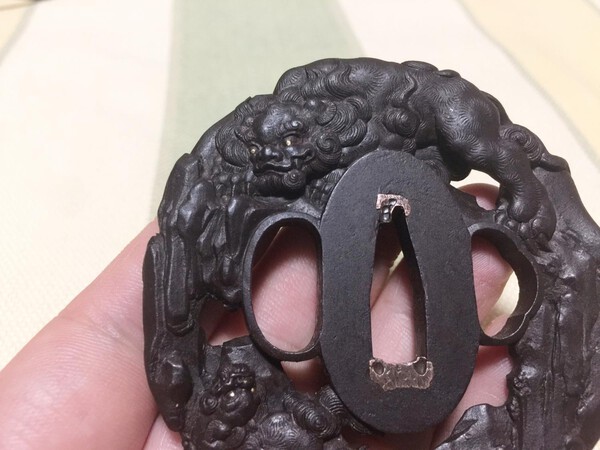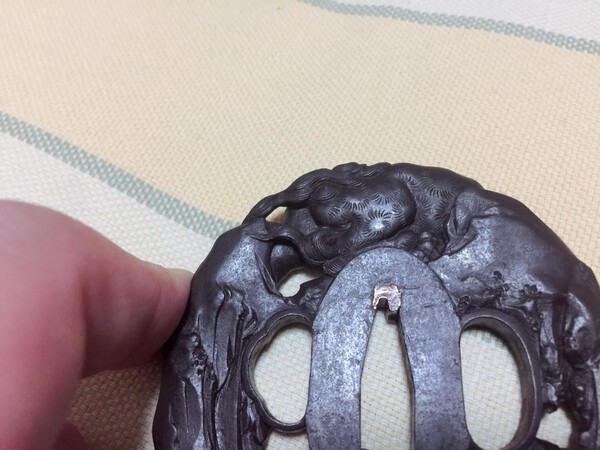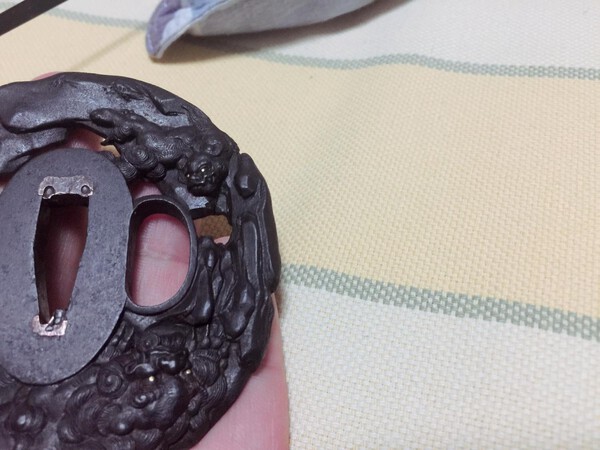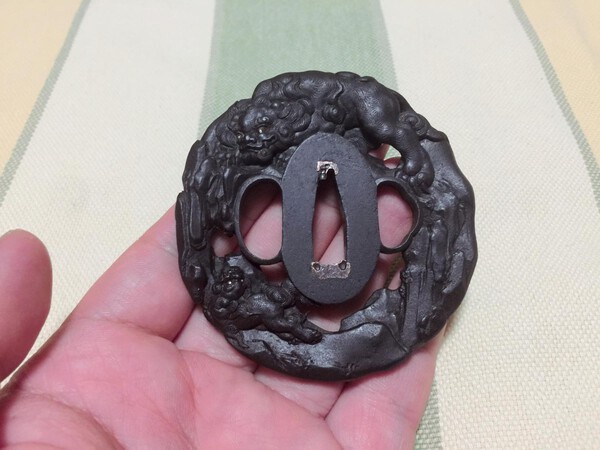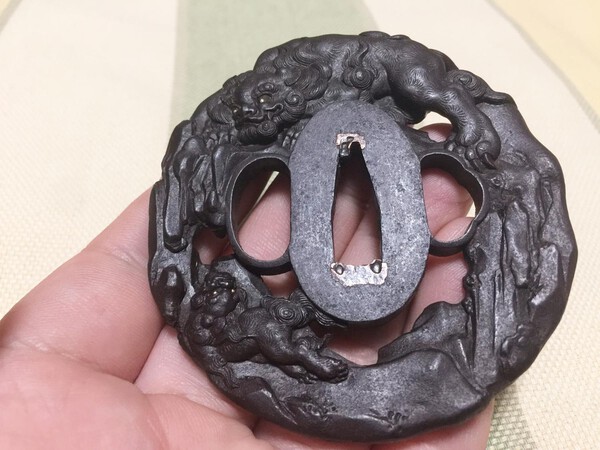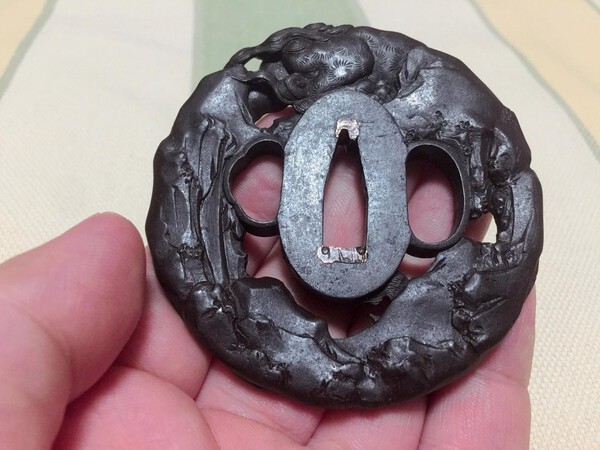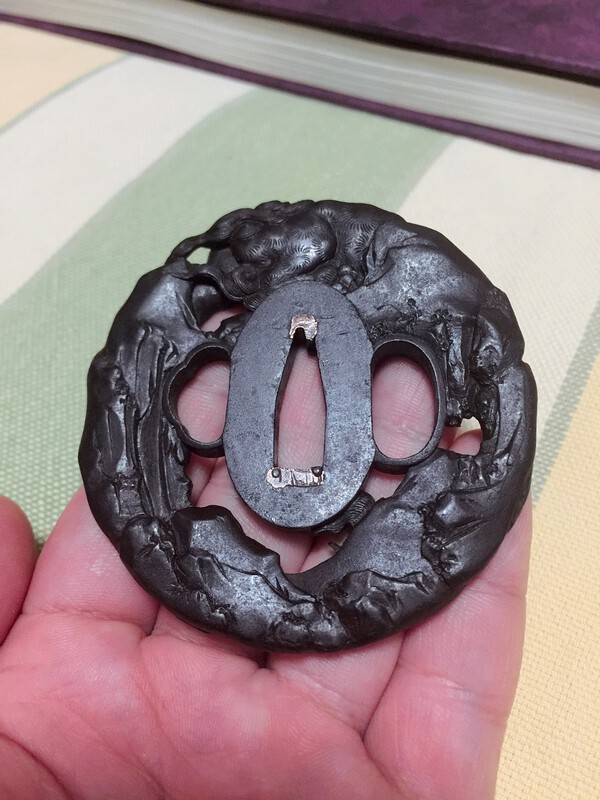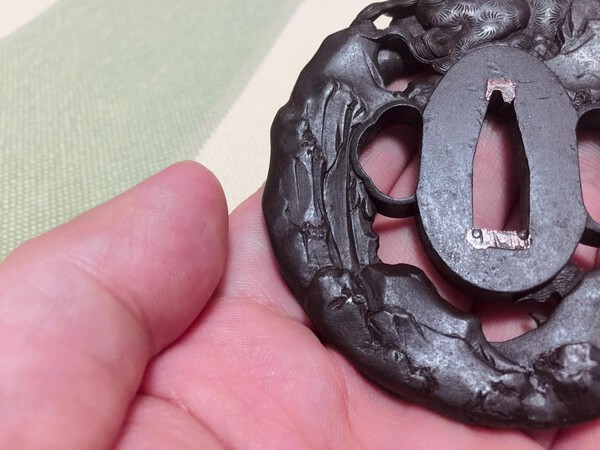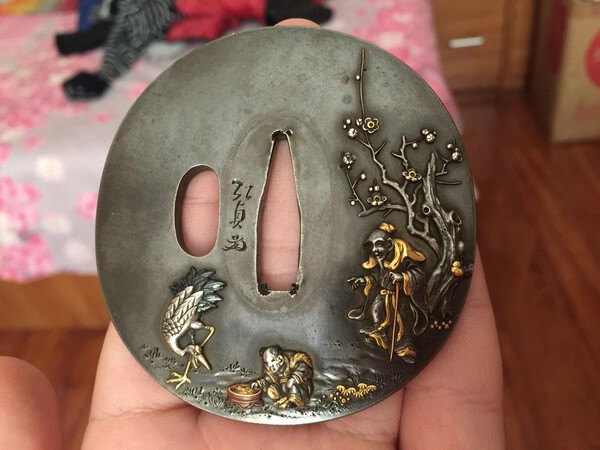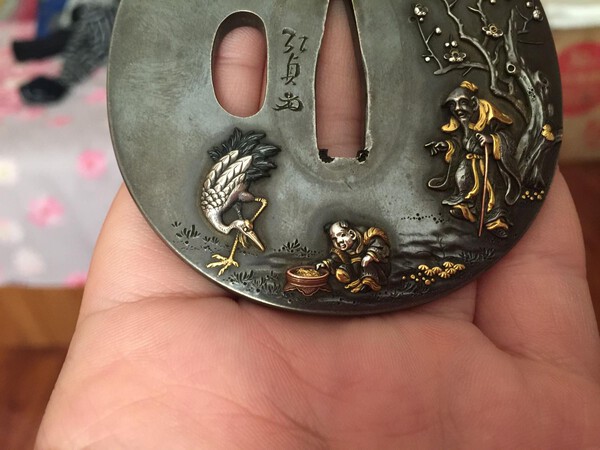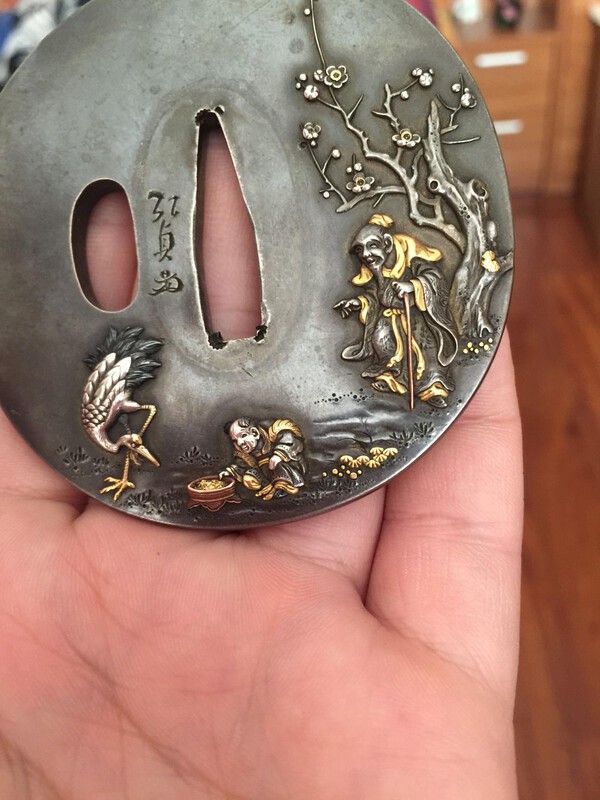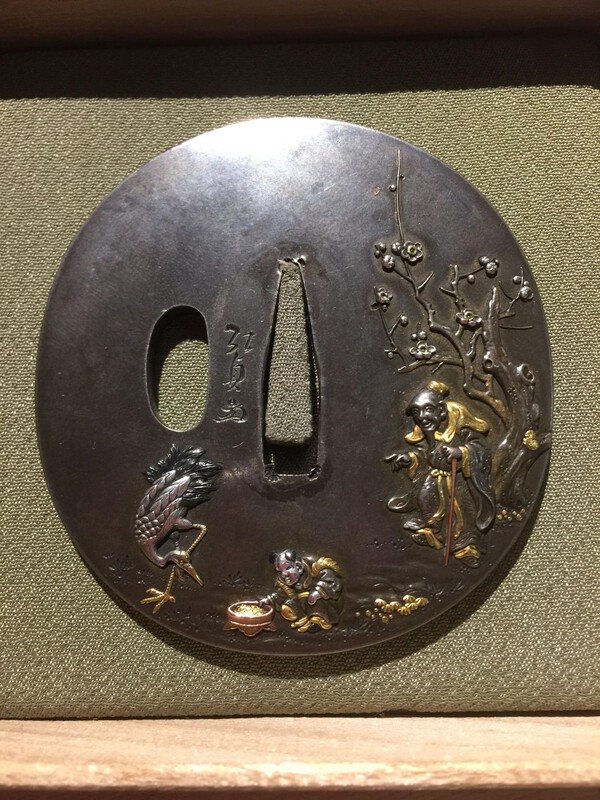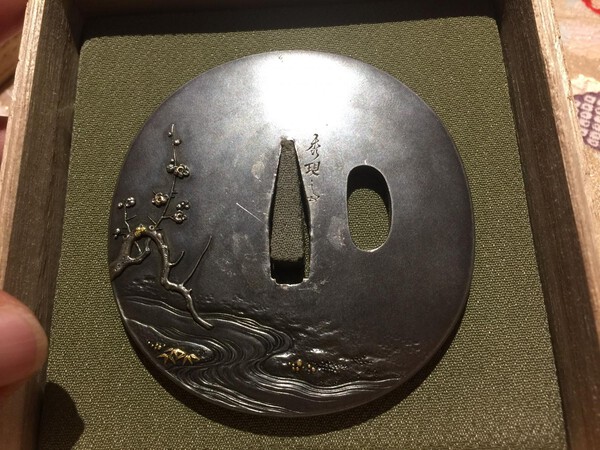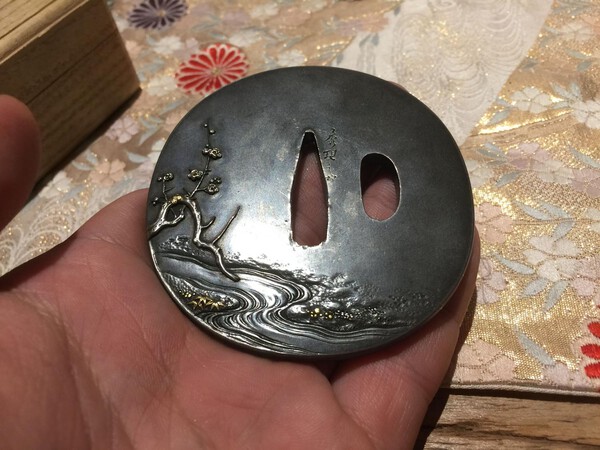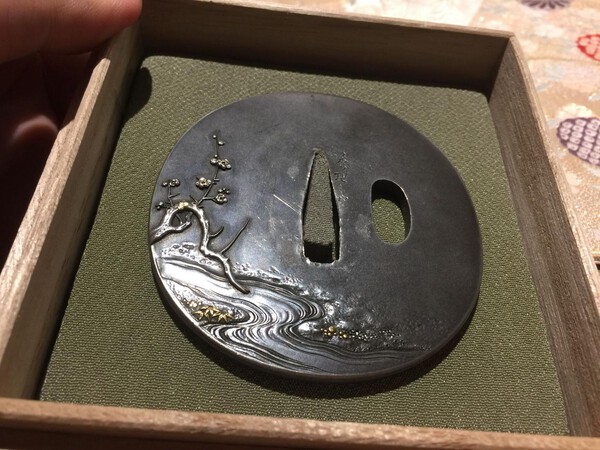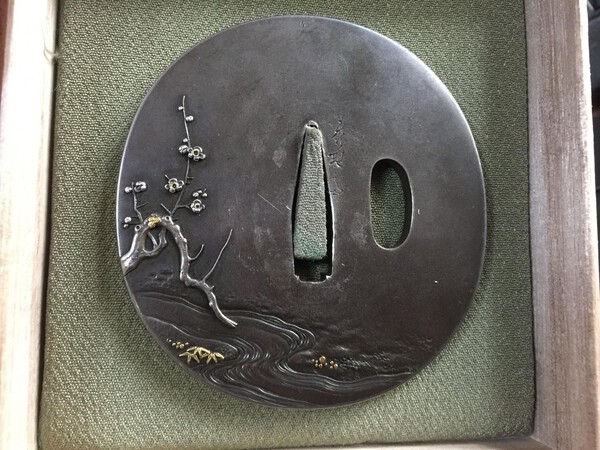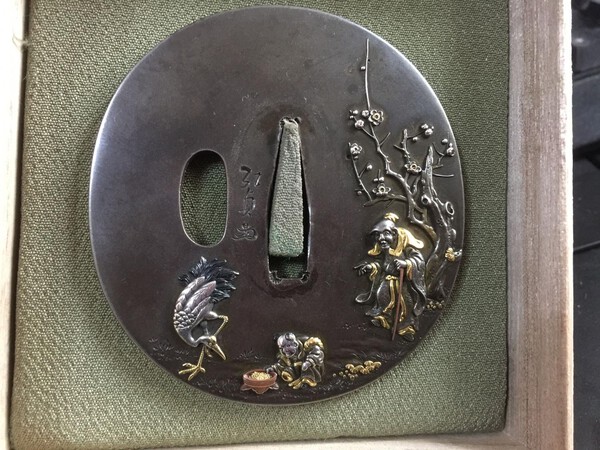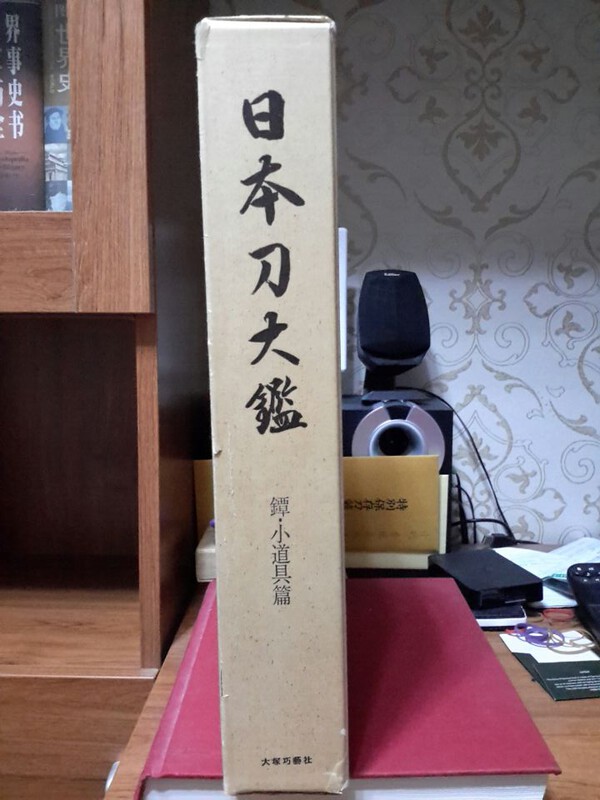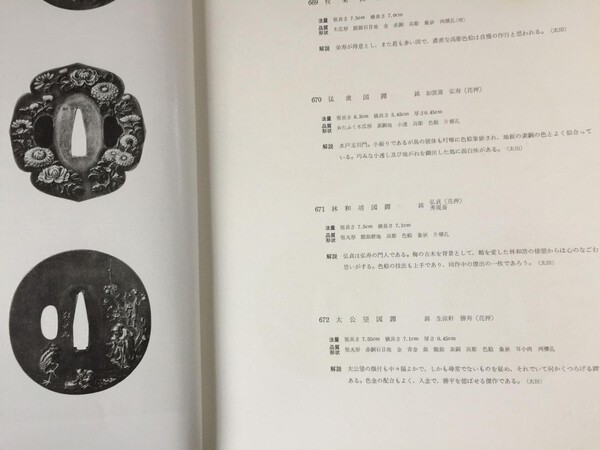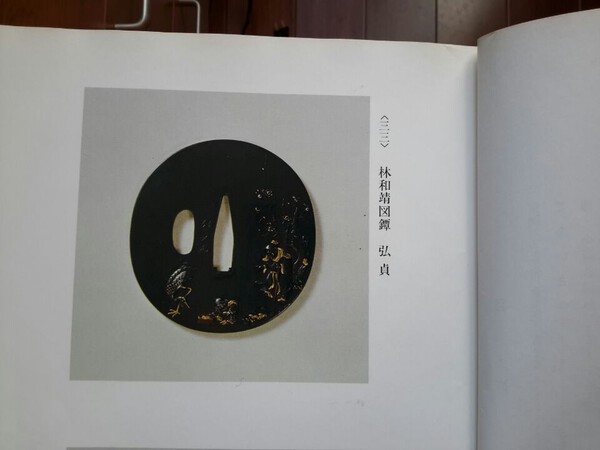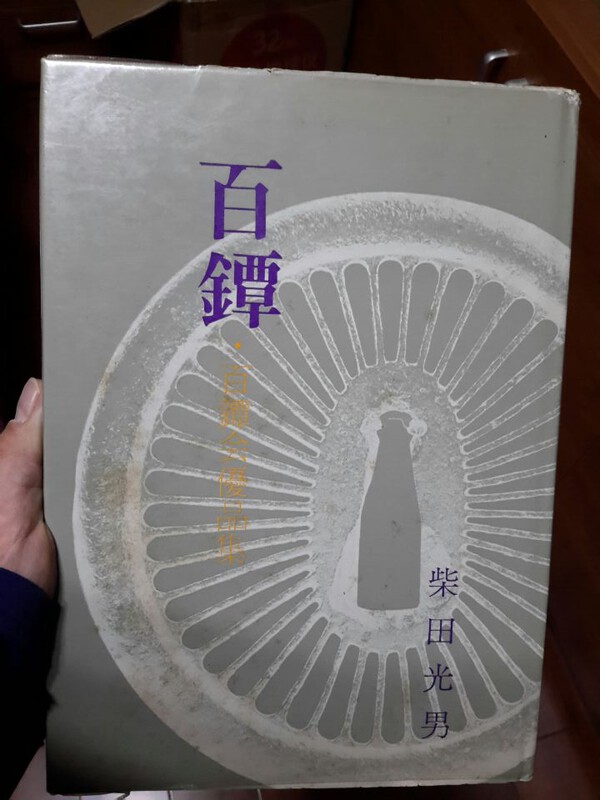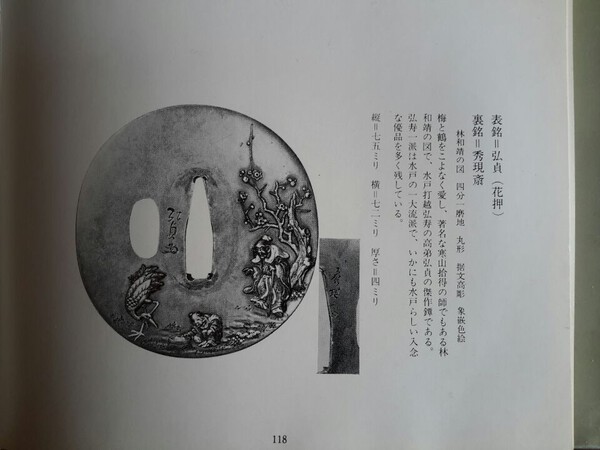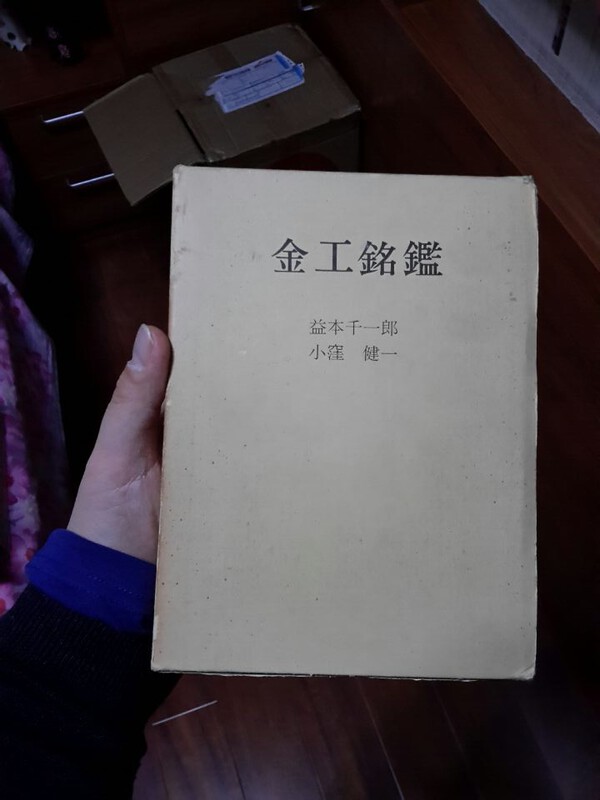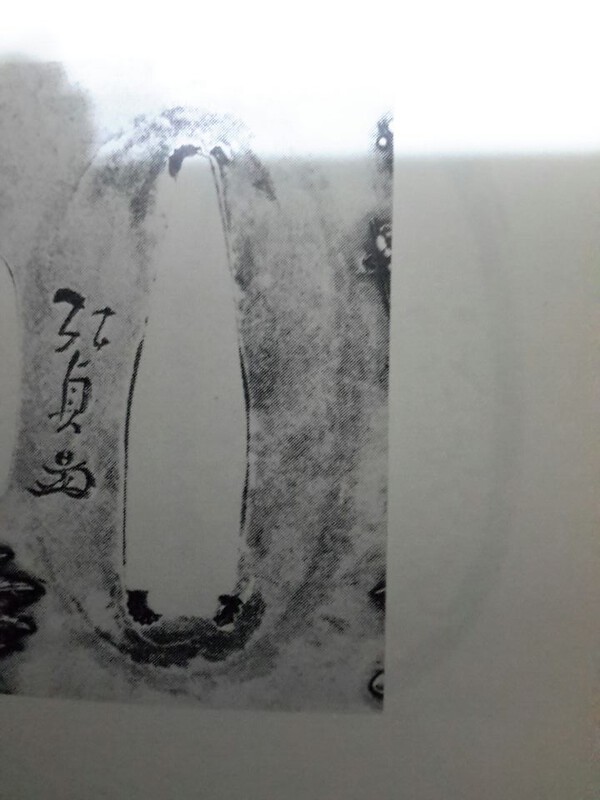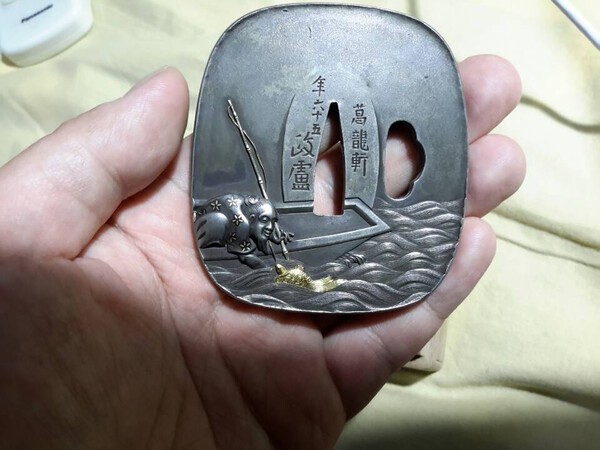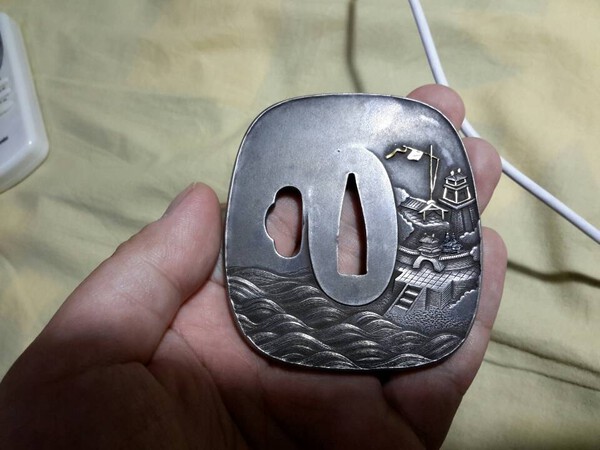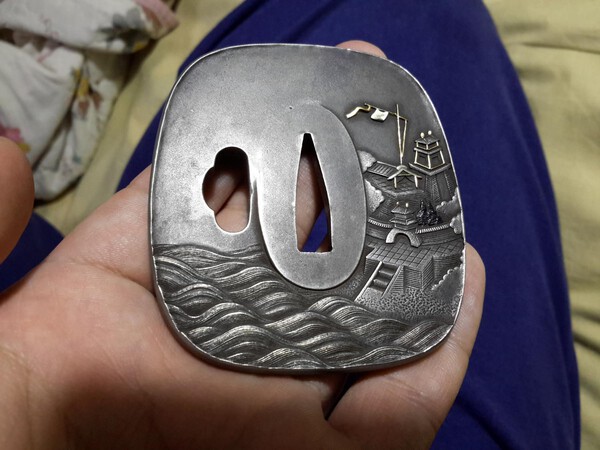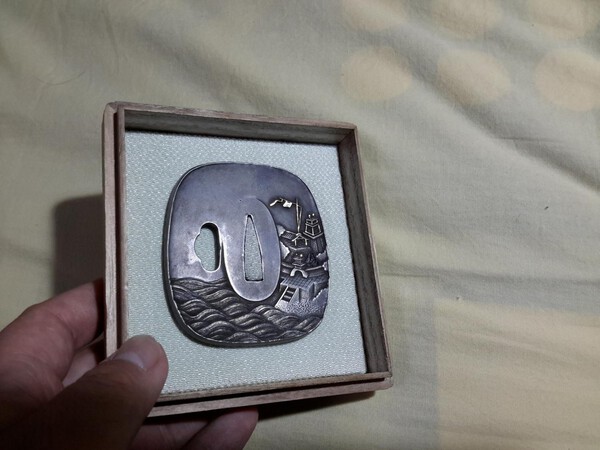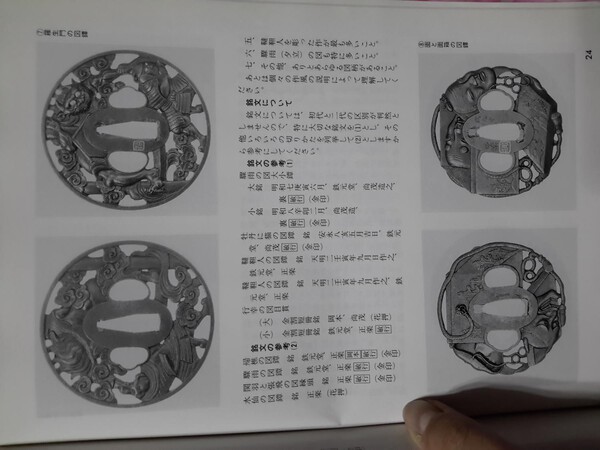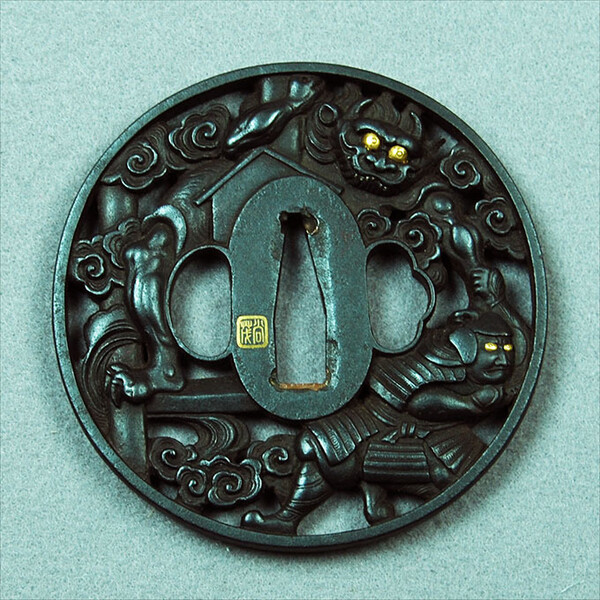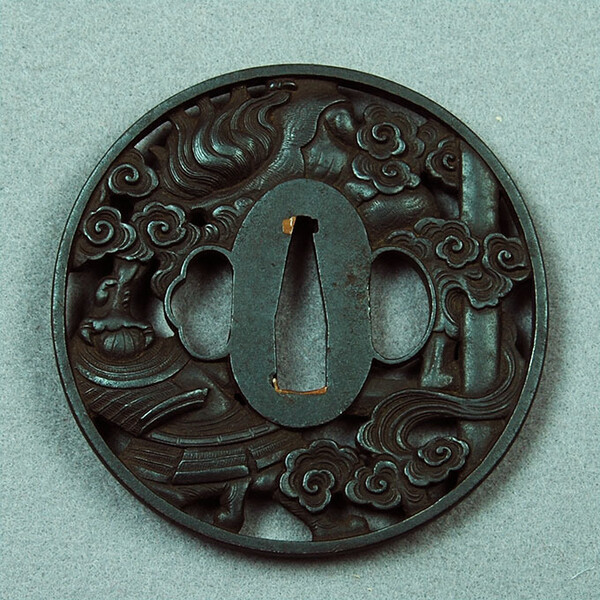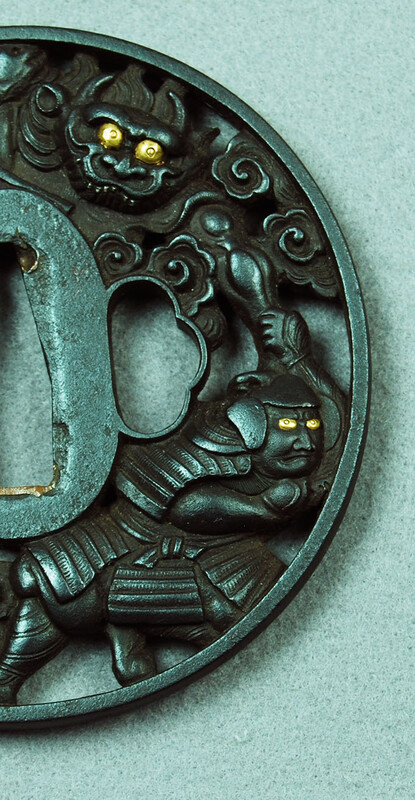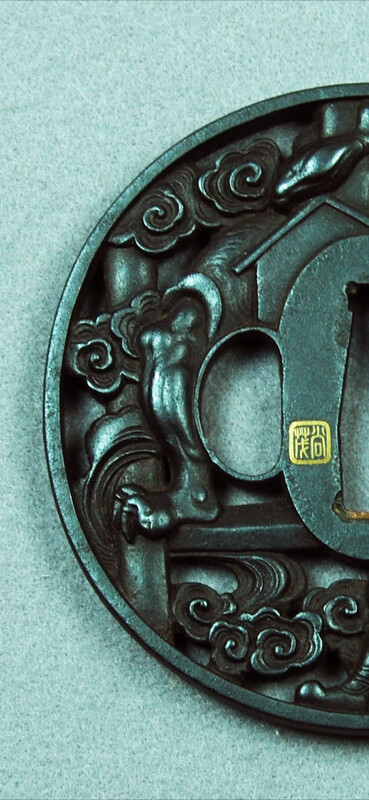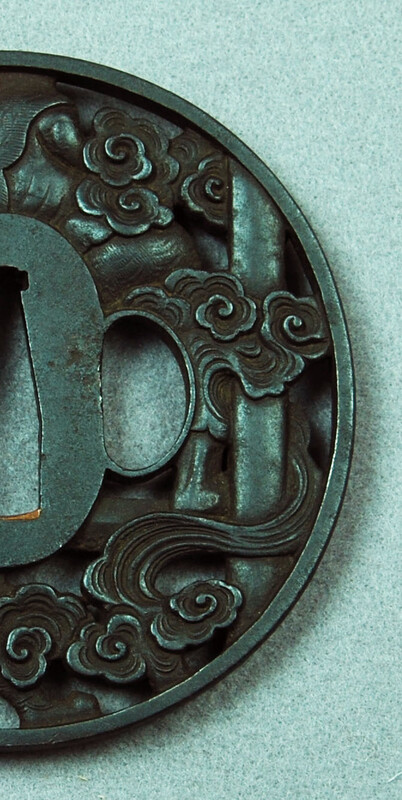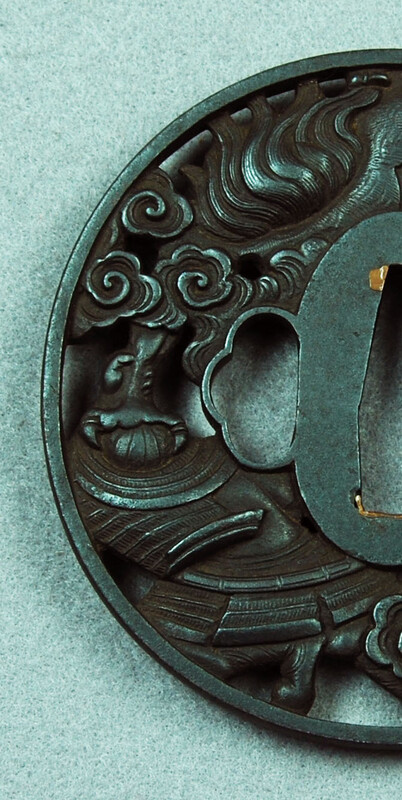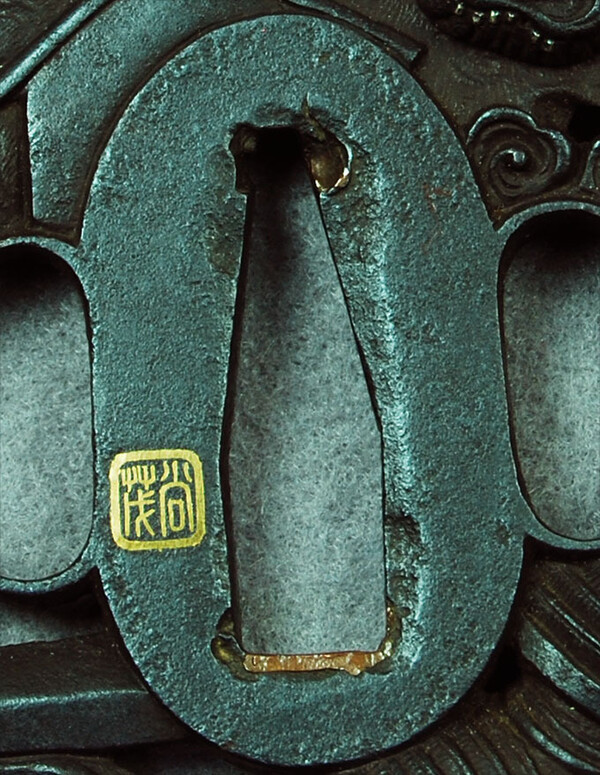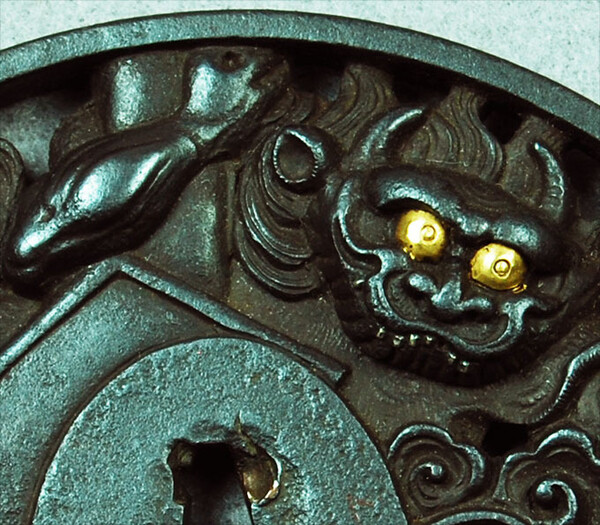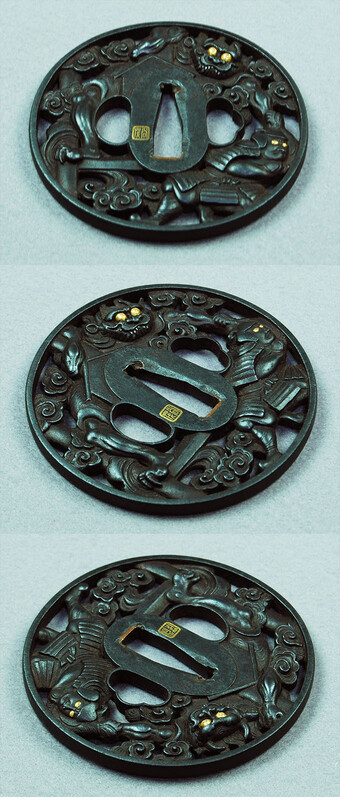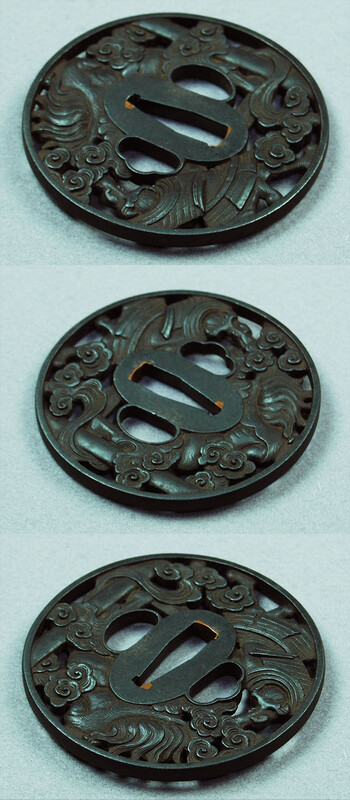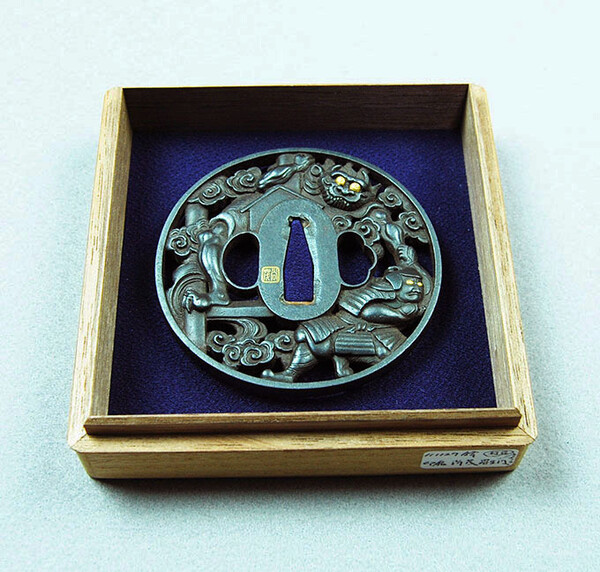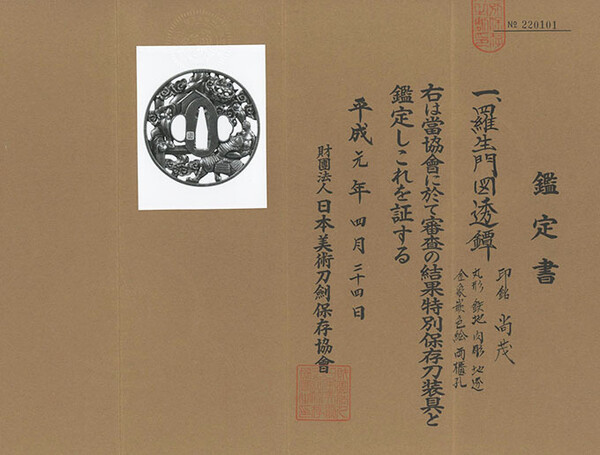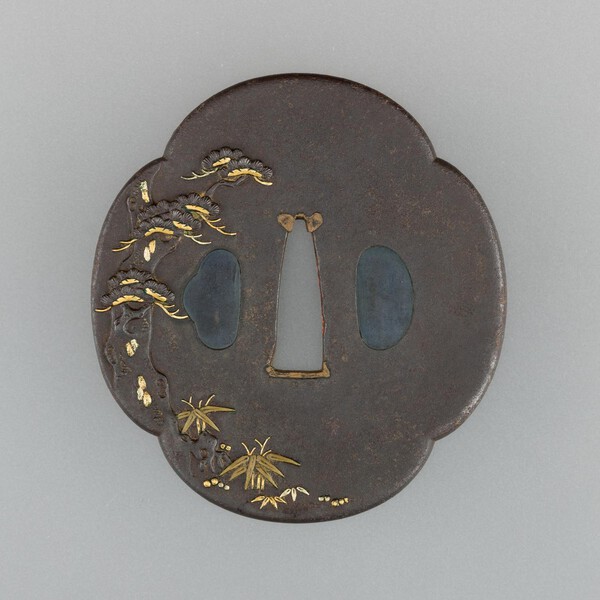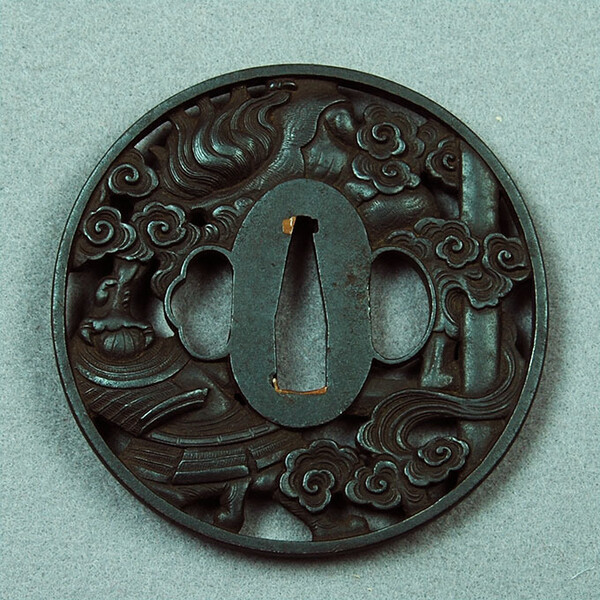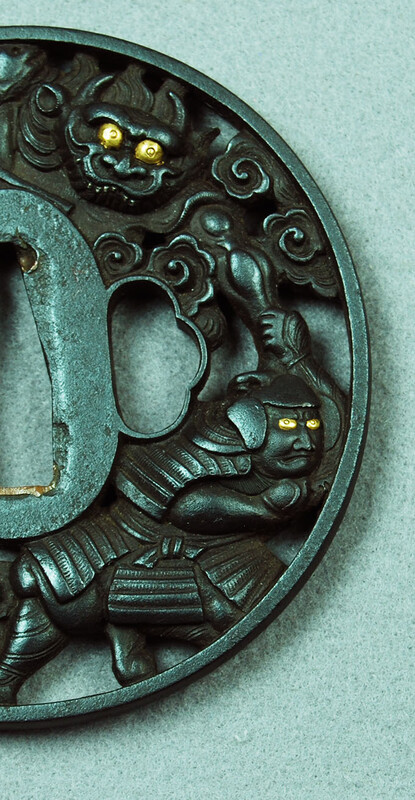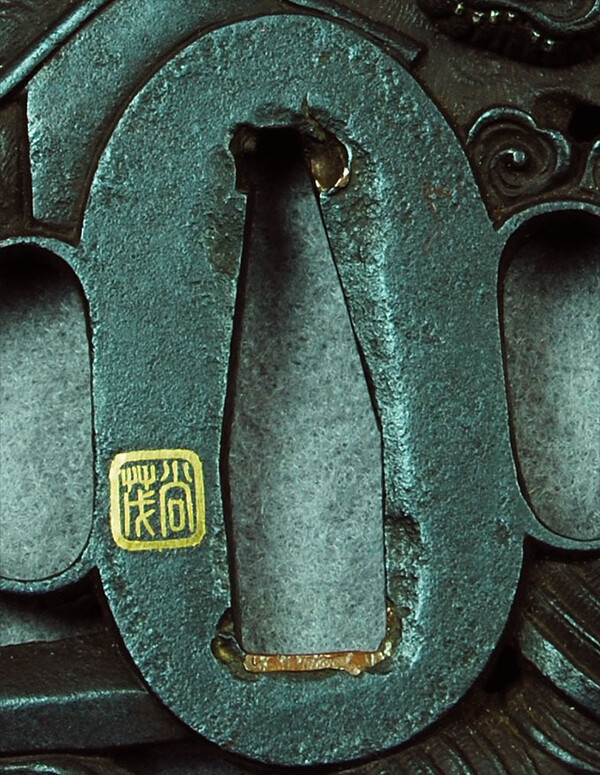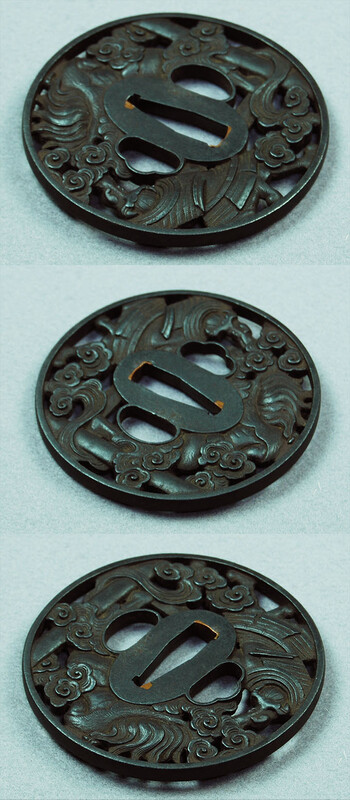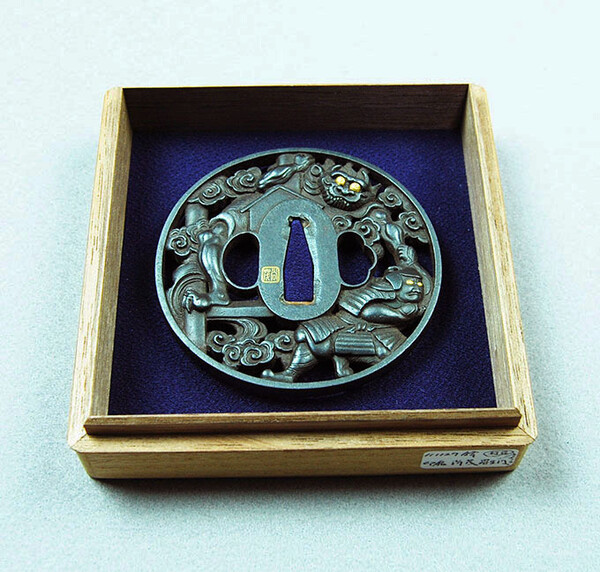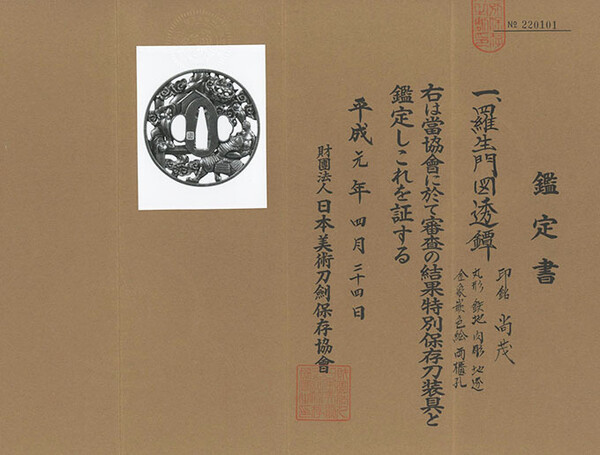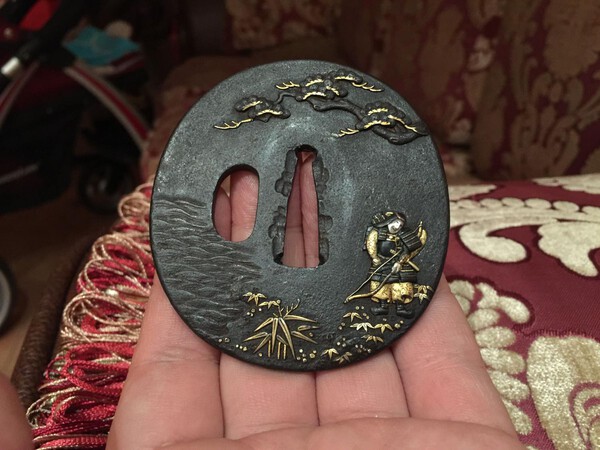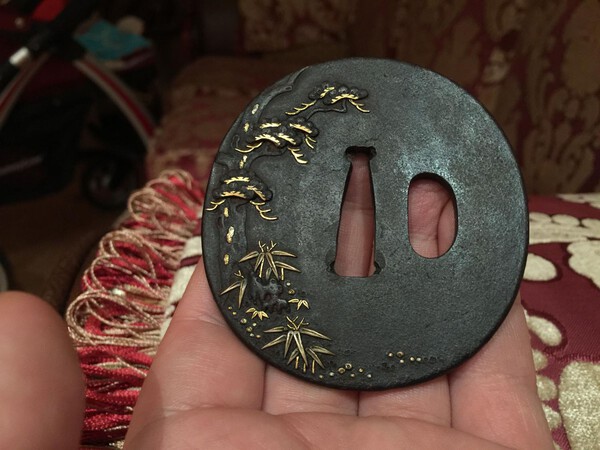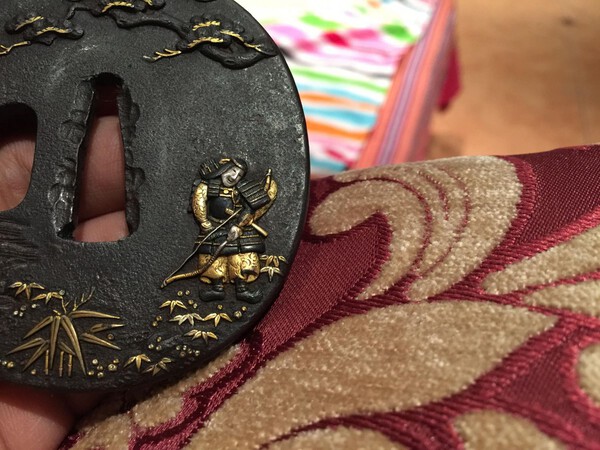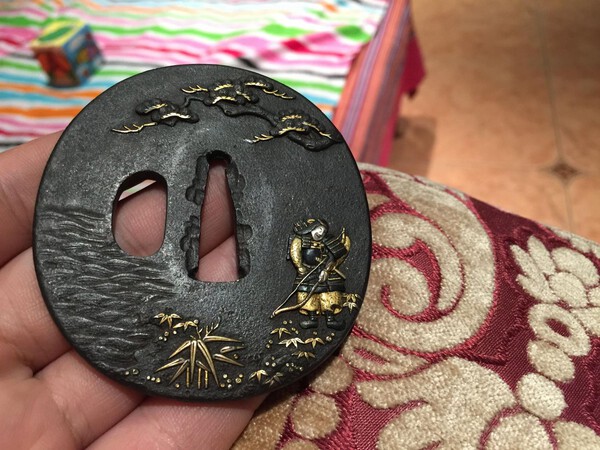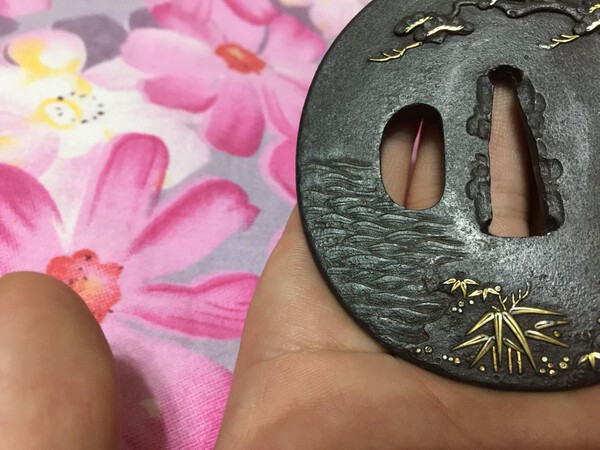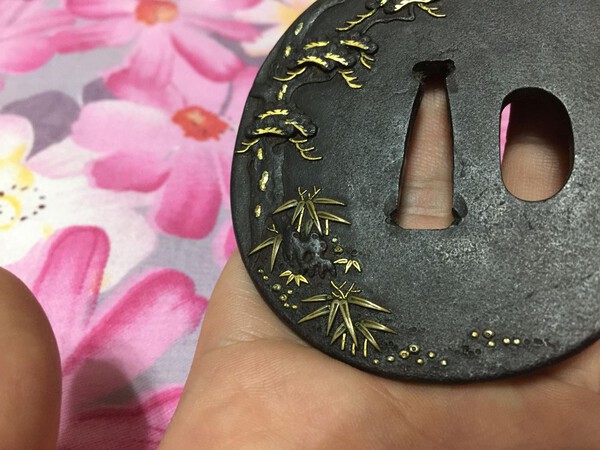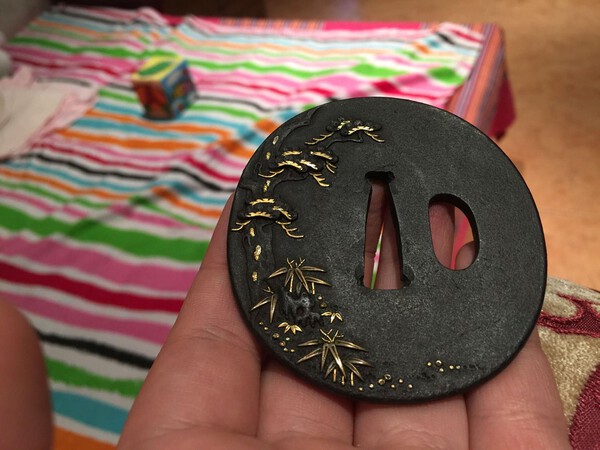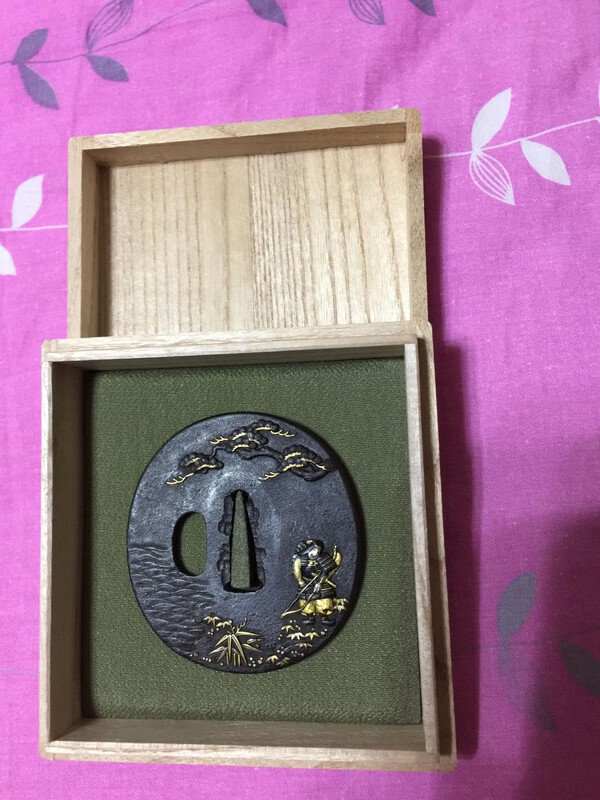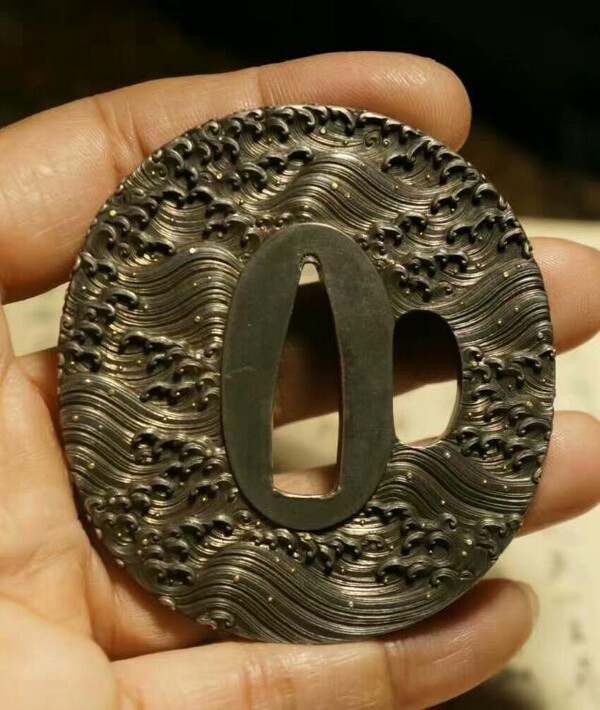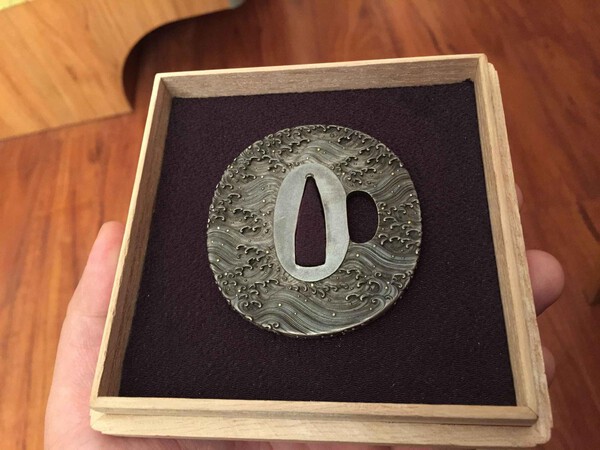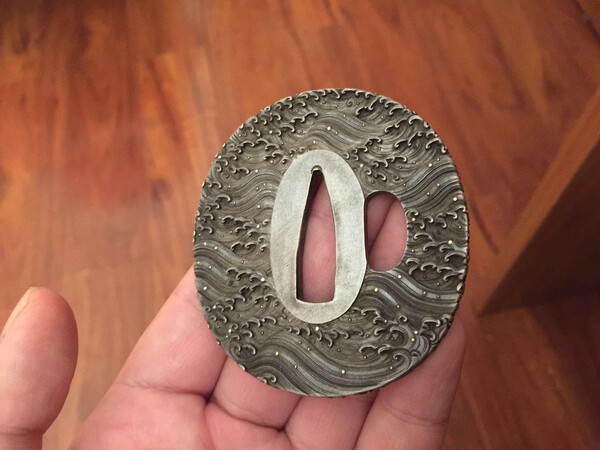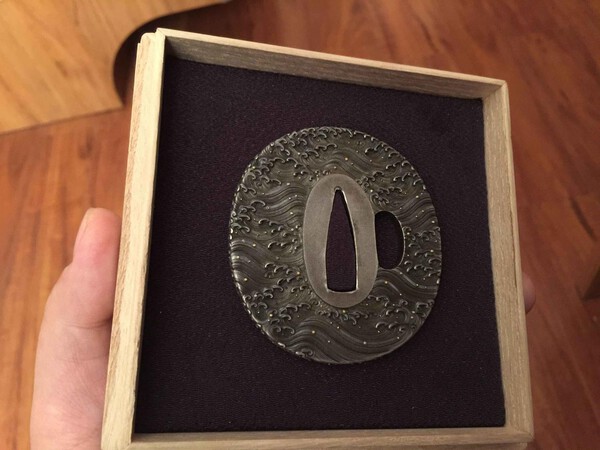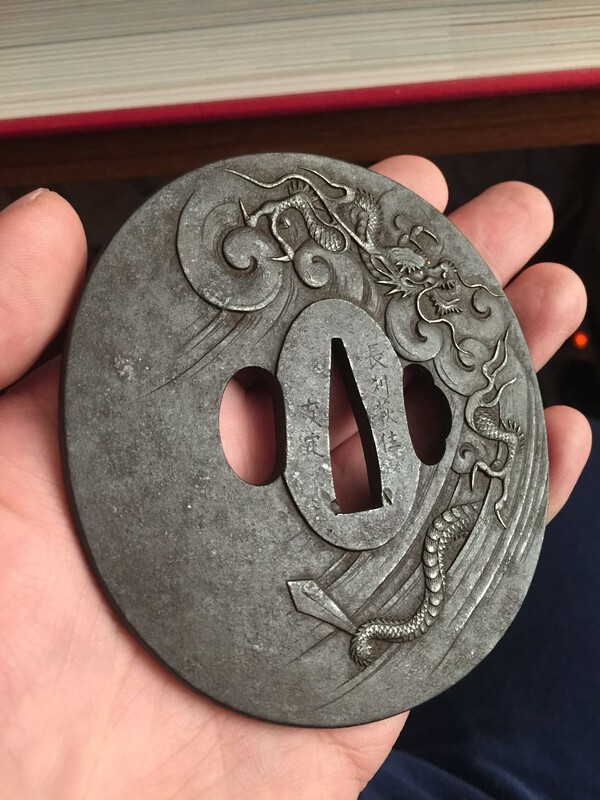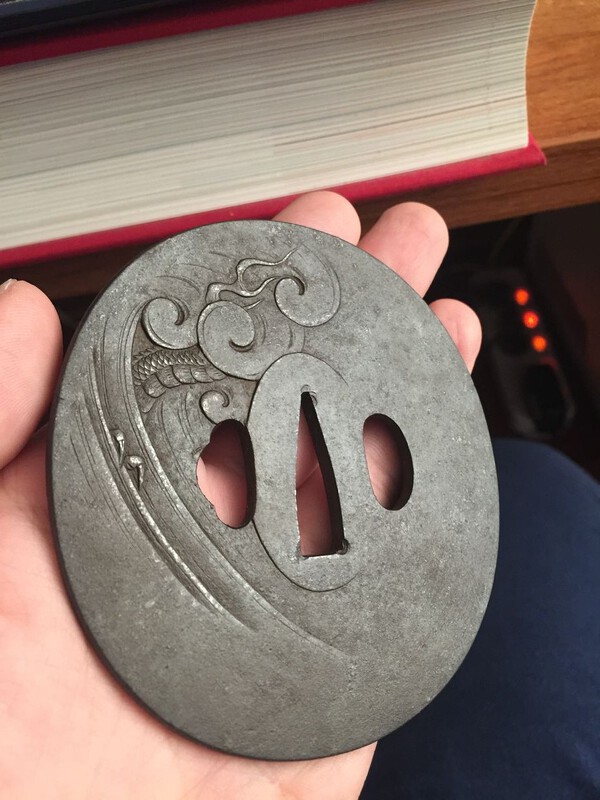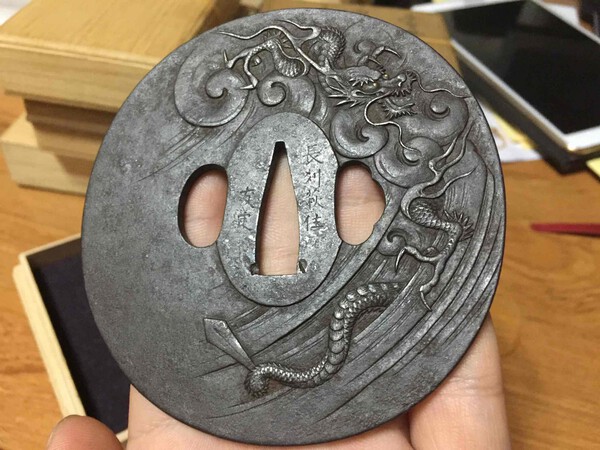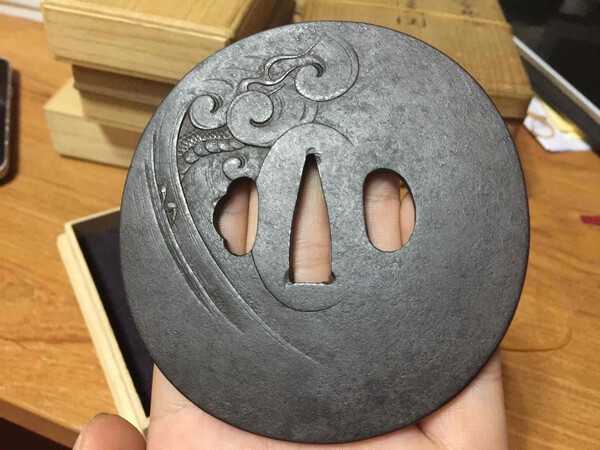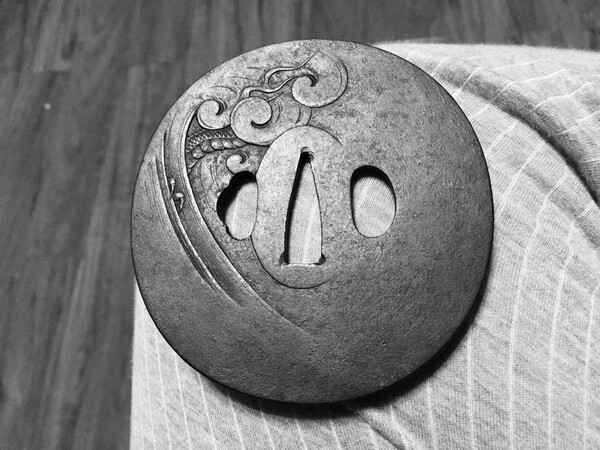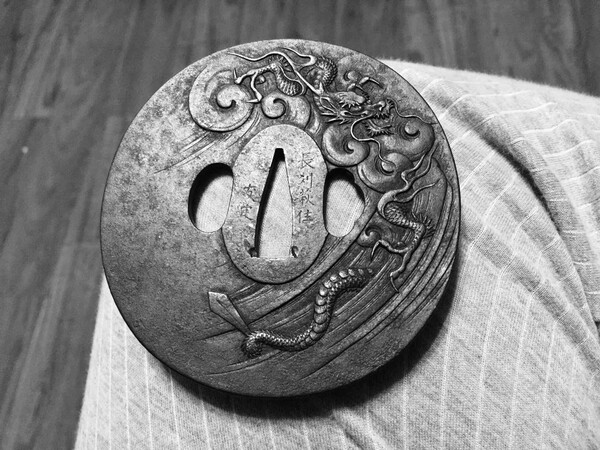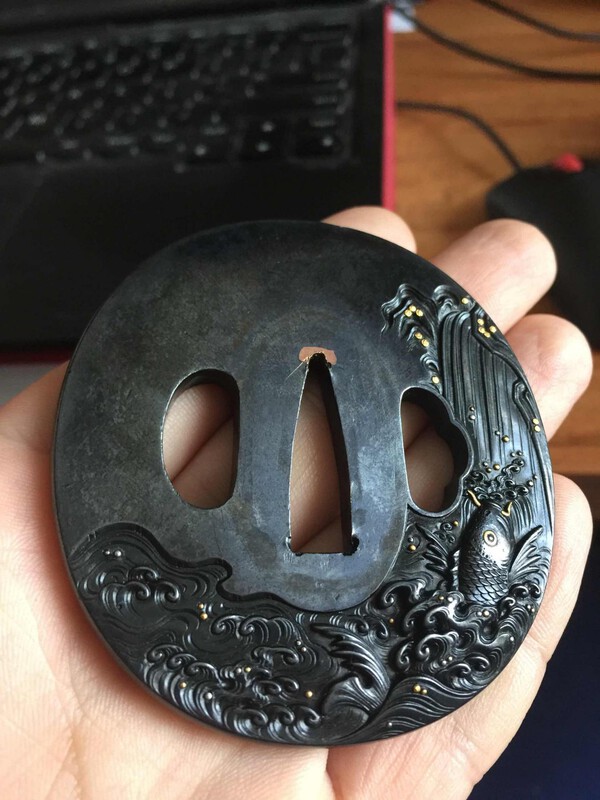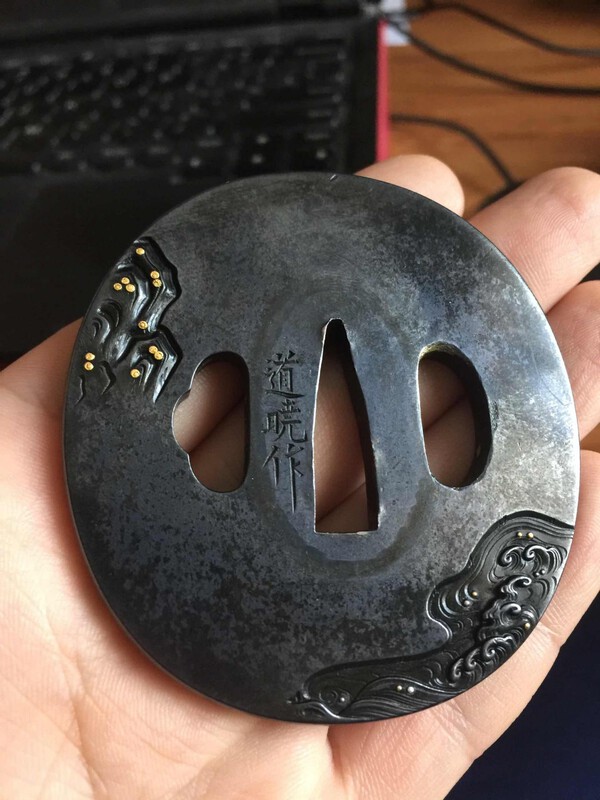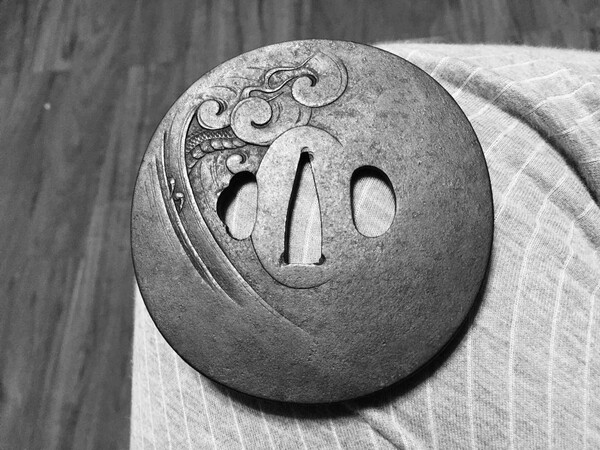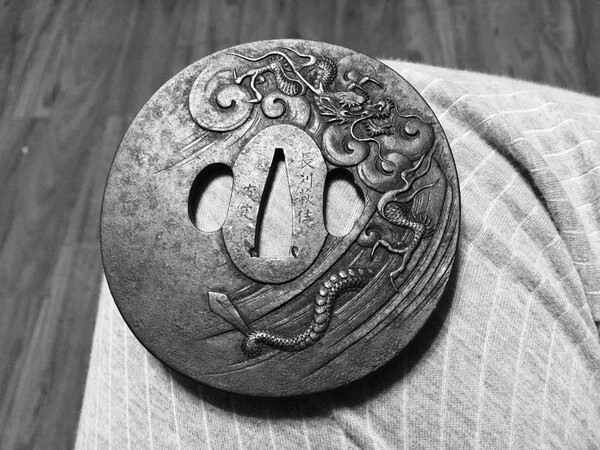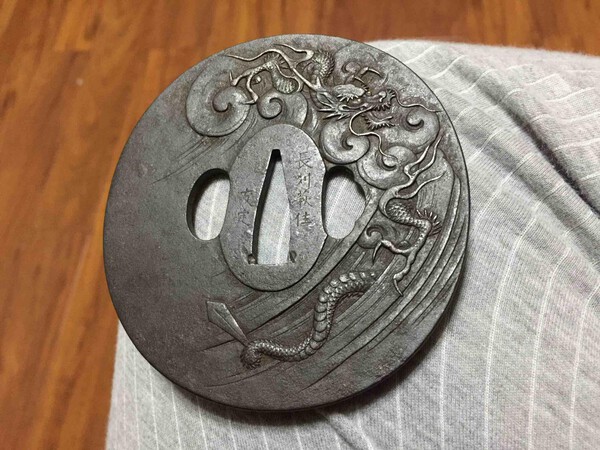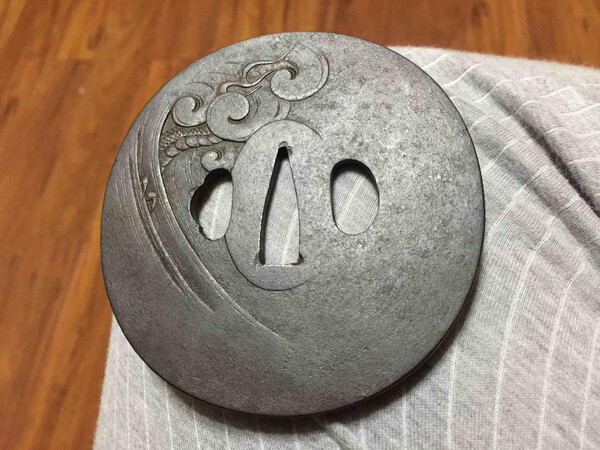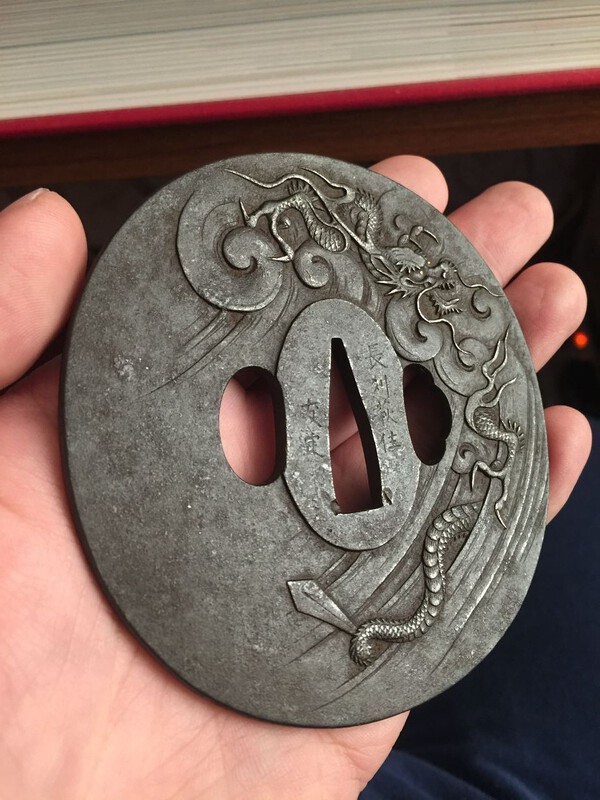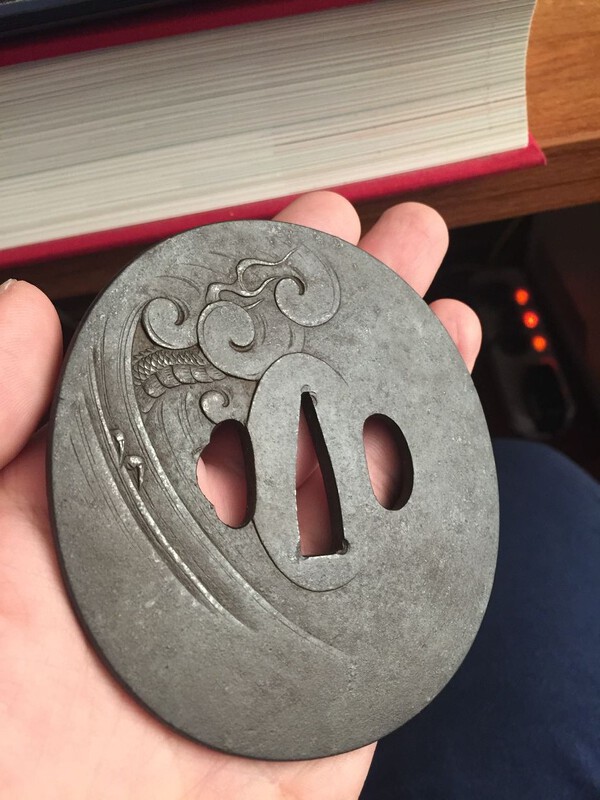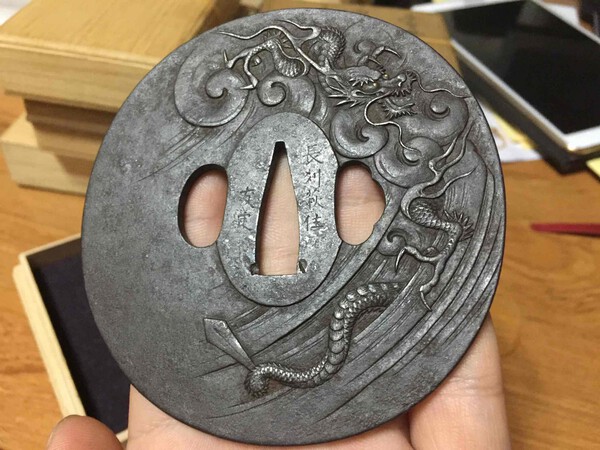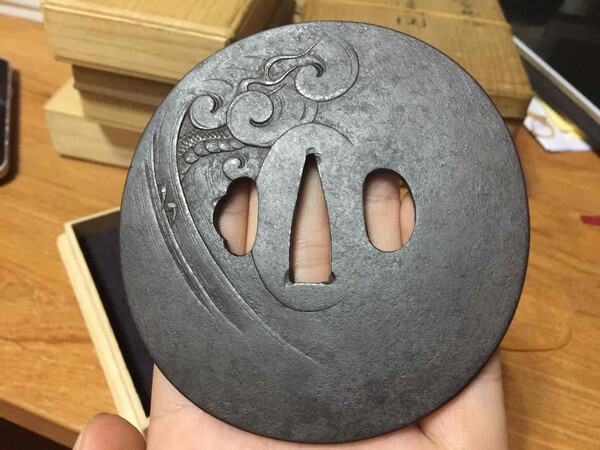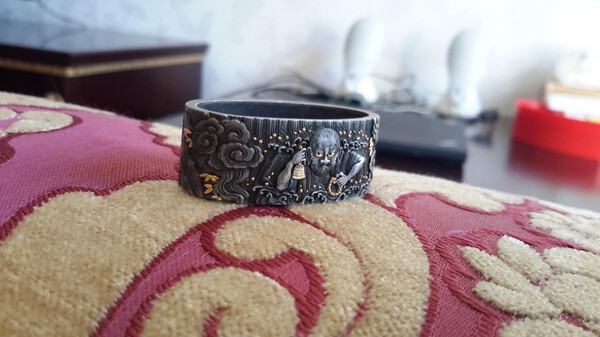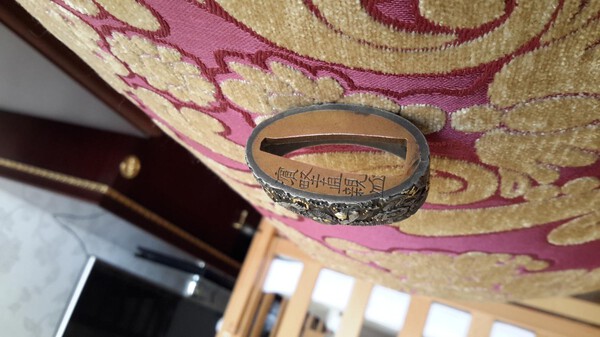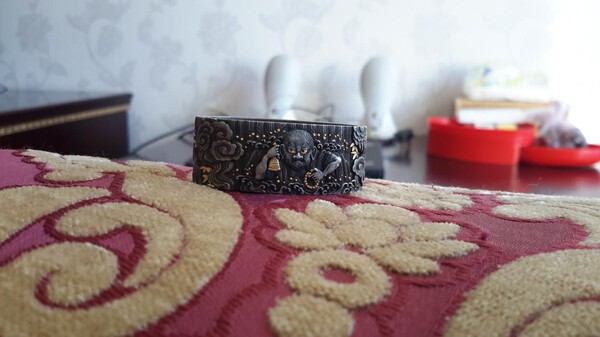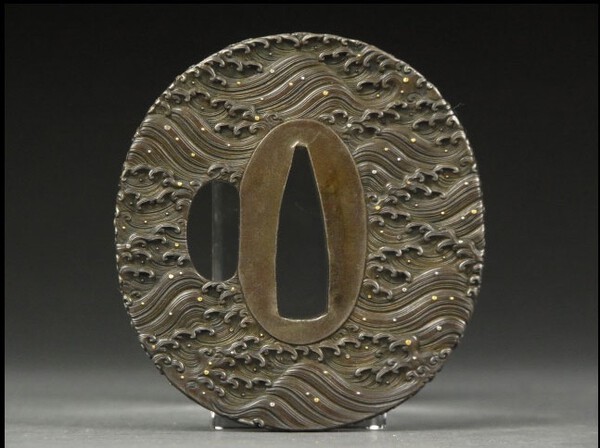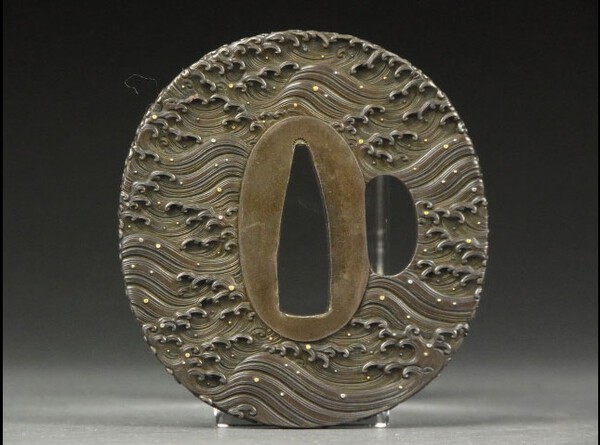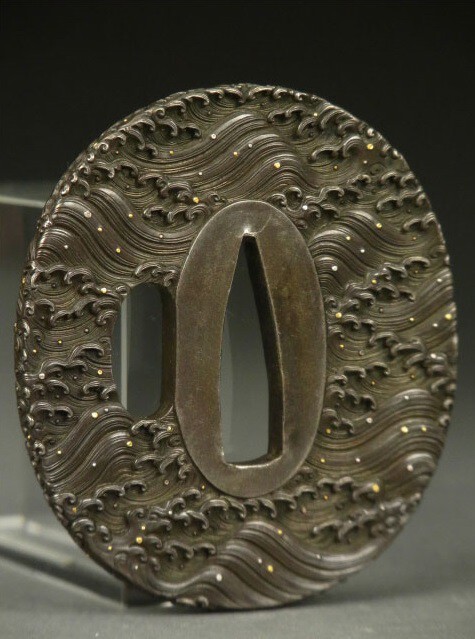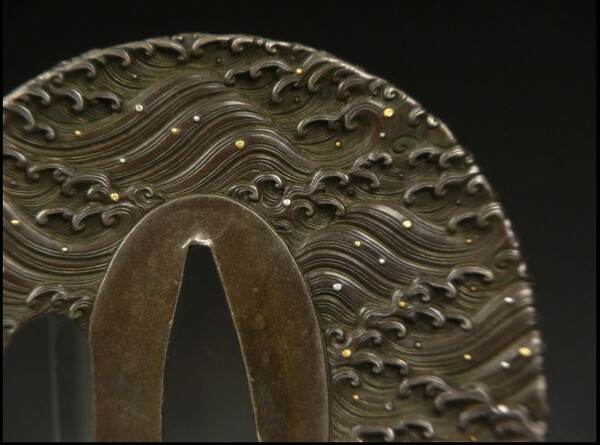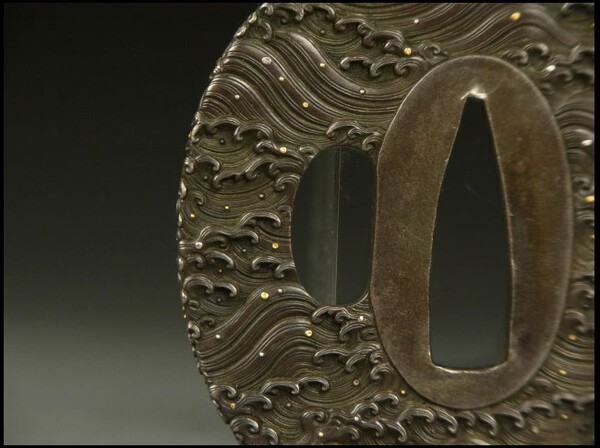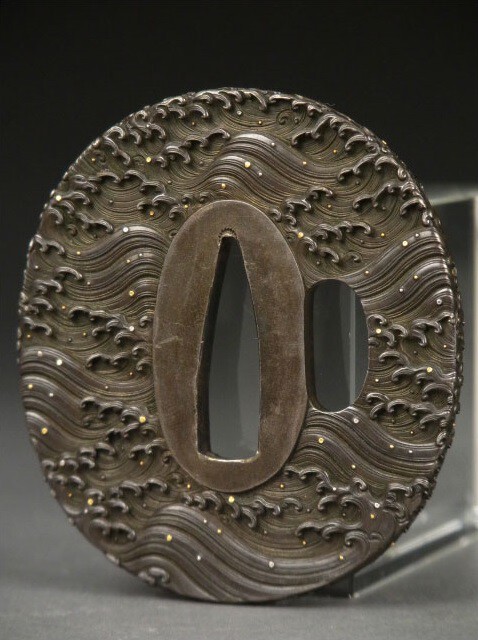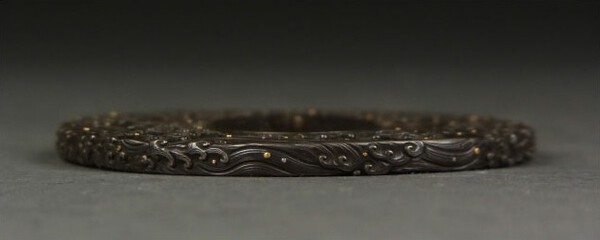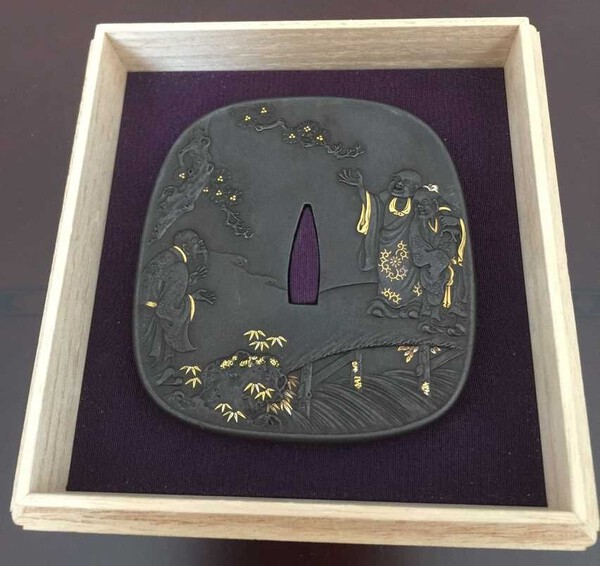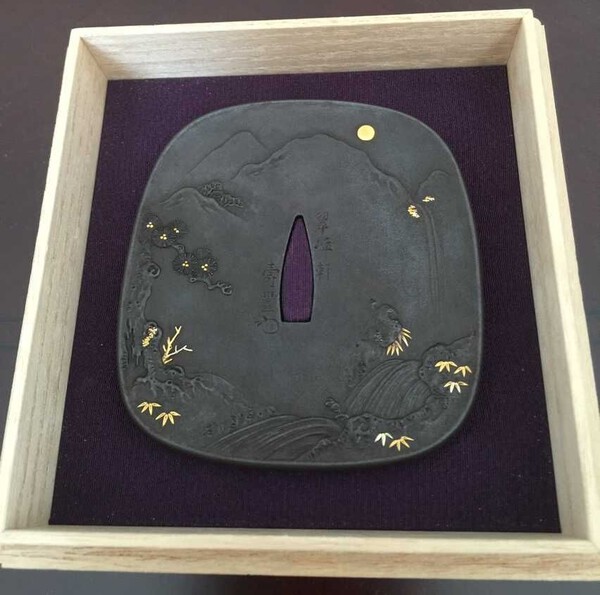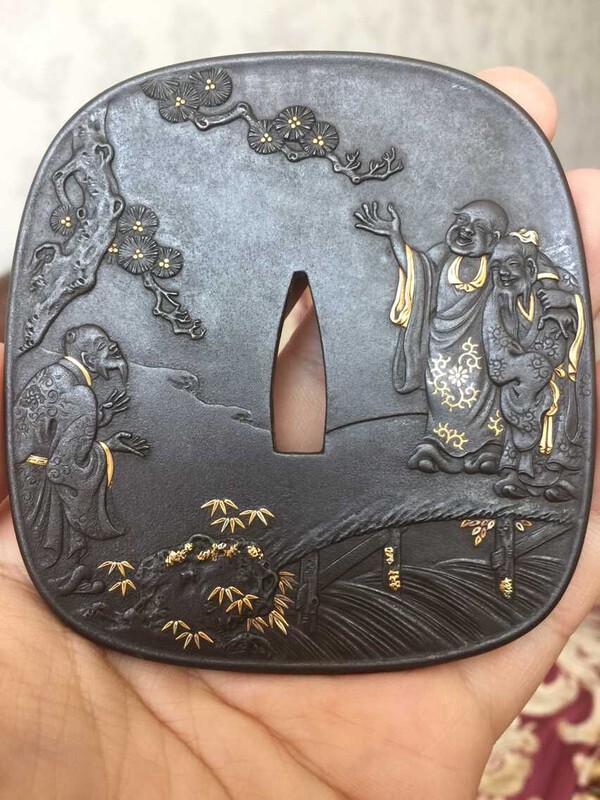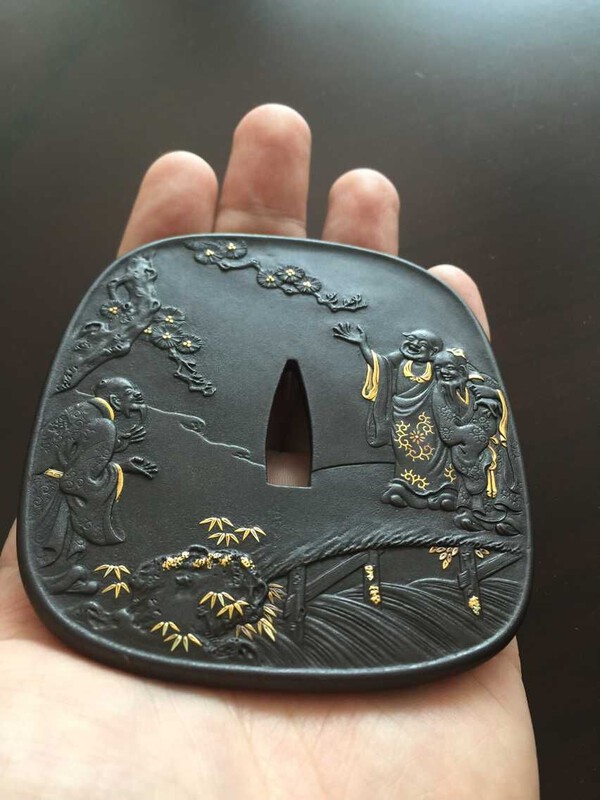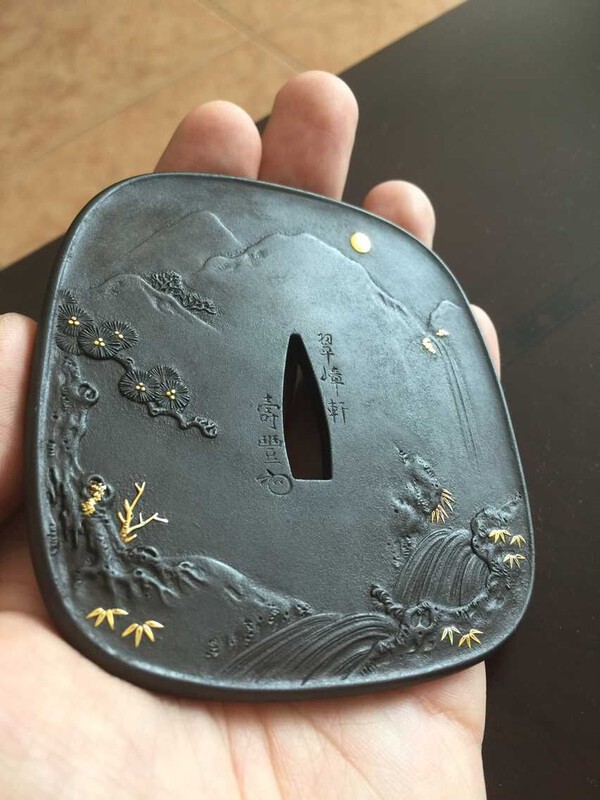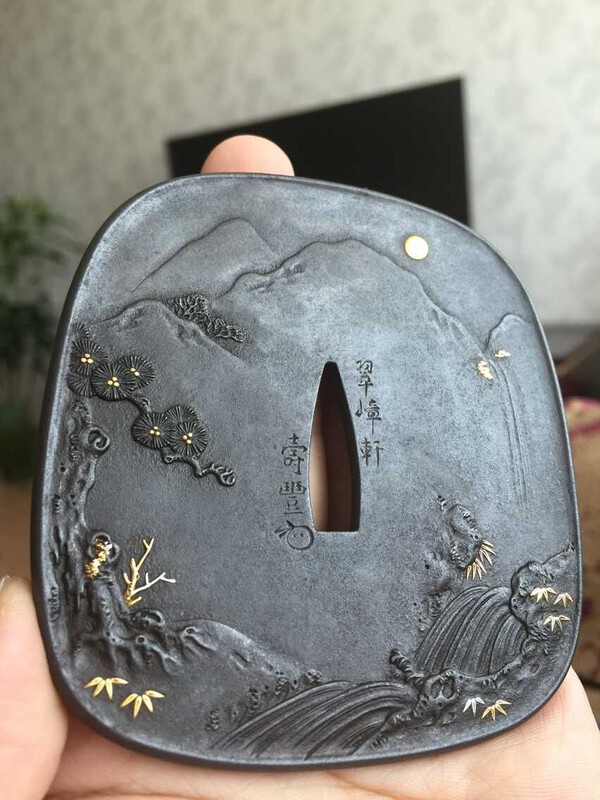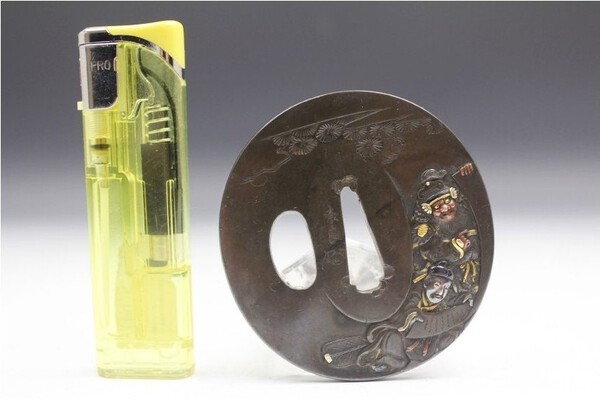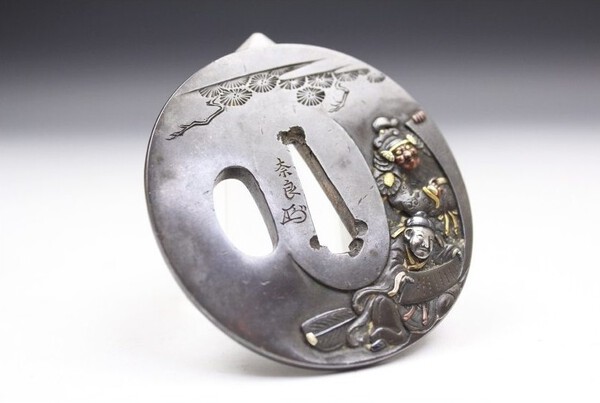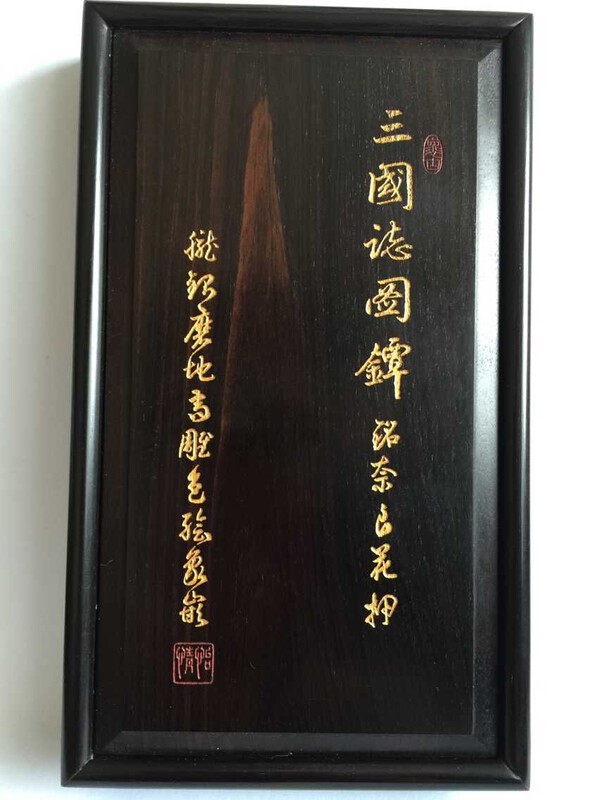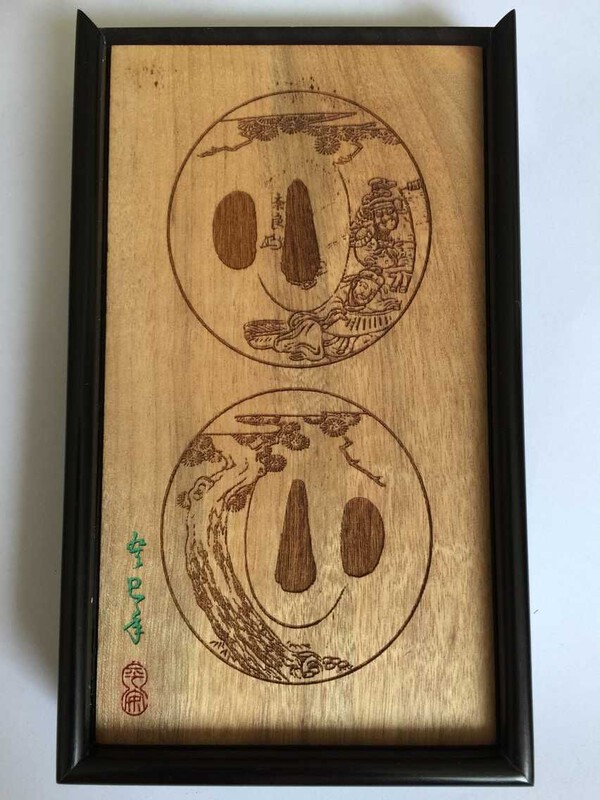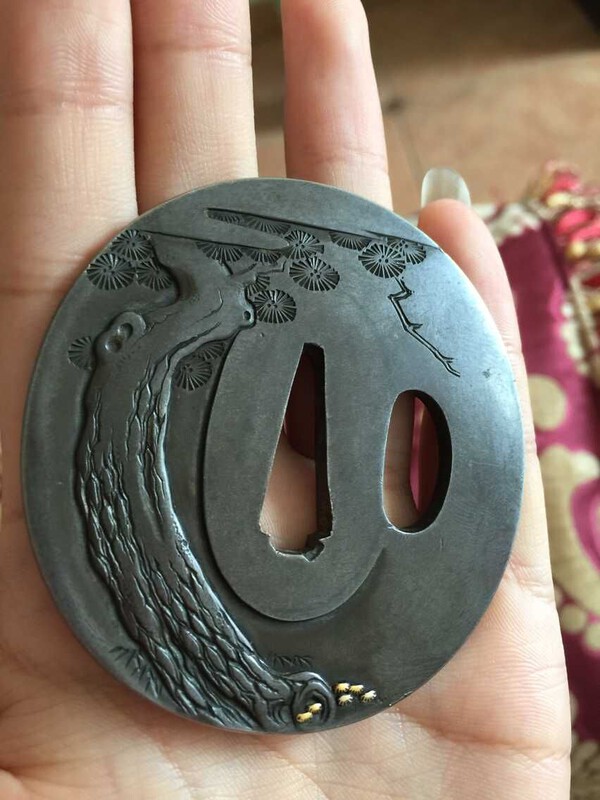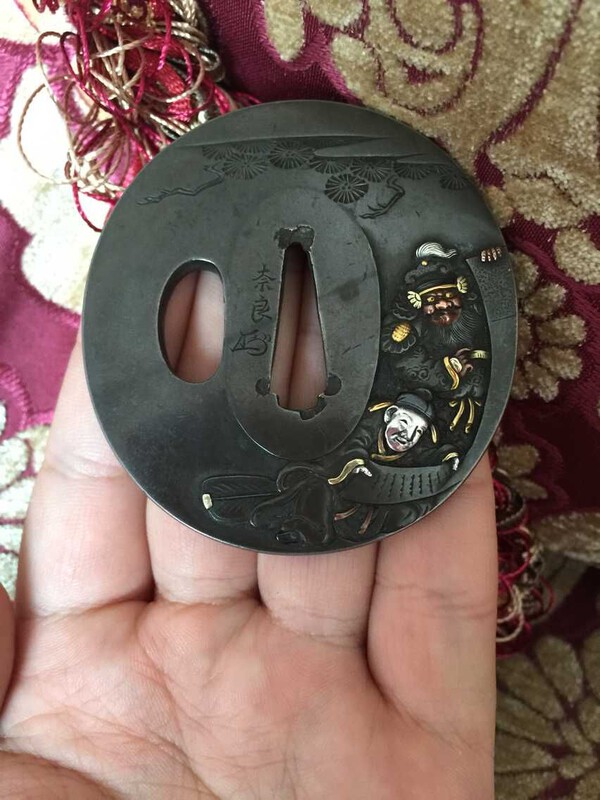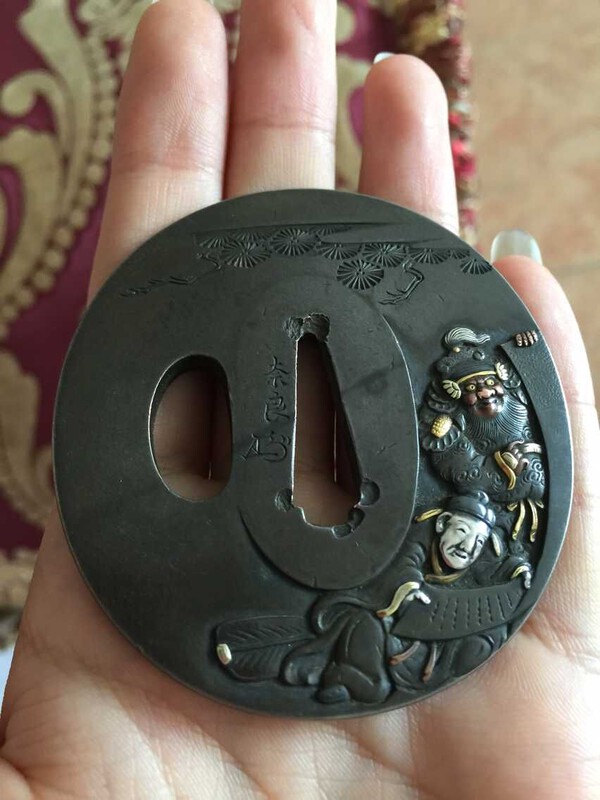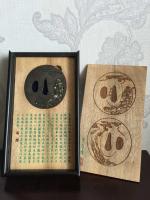
CHEN CHEN
Members-
Posts
33 -
Joined
-
Last visited
-
Days Won
1
Content Type
Profiles
Forums
Events
Store
Downloads
Gallery
Everything posted by CHEN CHEN
-
-
The pattern on this Kozuka comes from the Analects of Confucius. The Analects of Confucius is one of the most important classical books of ancient Chinese Confucianism. Its content records the words and deeds of Confucius, the founder of Confucianism. In the chapter of gongyechang, there is a dialogue between Confucius and his student Zilu: The Master said, "My doctrines make no way. I will get upon a raft, and float about on the sea. He that will accompany me will be You, I dare to say." Zi Lu hearing this was glad. I think it is the reproduction of this scene.
-
Yes, I think it is. The plots of the two have many similarities. So it is likely that Washington Irving was inspired by it. But in fact, there are more stories with similar plots in the East, such as another Chinese story "the governor of Nanke" or the Japanese legend "Urashima Tarō”。 Oh, by the way, don't forget Marvel's ancient legend "Captain America". Ha ha, just kidding!. But anyway, it seems that Ranka's plot is the closest to the novel. By the way, my tsuba seems to be the only thing that uses this theme. I didn't see the second tosogu carved with this theme, including those in the market and in the museum. I haven't even seen any works on this subject in any book, which is very interesting. If you are interested, you can study it in depth in the future.
-
I'm glad the atmosphere here is active again. To celebrate. Continue to share my collection with you. Ranka (legend) One plot element of the legend features two immortals playing a board game, interpreted in later times as Go, so that Lanke (or Ranka in Japanese) has become a literary name for Go. The legend is recorded in Ren Fang [zh]'s Shuyiji [zh; ja] or Tales of the Strange, and features a woodcutter, Wang Zhi or Wang Chih (王質, Wáng Zhì), and his encounter with the two immortals in the mountains. The story runs as follows: Wang Zhi was a hardy young fellow who used to venture deep into the mountains to find suitable wood for his axe. One day he went farther than usual and became lost. He wandered about for a while and eventually came upon two strange old men who were playing Go, their board resting on a rock between them. Wang Zhi was fascinated. He put down his axe and began to watch. One of the players gave him something like a date to chew on, so that he felt neither hunger nor thirst. As he continued to watch he fell into a trance for what seemed like an hour or two. When he awoke, however, the two old men were no longer there. He found that his axe handle had rotted to dust and he had grown a long beard. When he returned to his native village he discovered that his family had disappeared and that no one even remembered his name.
-
Hello. I don't think this is the work of tetsugendo school, because it is very different from his style. Actually, I'm not sure about the author of this thing. I asked the experts in Japan. Some people think that this is the work of ichinomiya school, and it may even be the work of ichinomiya nagatsun's youth (i.e. the period of setsusan). Of course, it's just a statement from one family. So far, I haven't got an accurate answer.
-
-
Huang Shigong Granting Zhang Liang Menuki This piece portrays the encounter between Zhang Liang and Huang Shigong. Zhang Liang plotted a failed assassination attempt at emperor Qin Shi Huang and subsequently went into hiding in Xiapi. According to legend, he met an old man there at Yishui Bridge who threw his shoe down on purpose and asked Zhang to go fetch it. Zhang reluctantly got it, and the man asked if he could put it on for him. Zhang was angry but managed to hide his temper and obliged. First, the man left laughing out loud, but then came back and said: "This child can be taught!". He then ordered Zhang to meet him at dawn, five days later. When Zhang arrived the man was already there, scolding: "How can you be late for a meeting with an elderly man? Come back again five days later!". The next time, Zhang came early but still not early enough so the third time he came at midnight and waited for the old man to arrive. The old man was impressed with Zhang Liang's fortitude and humility, and presented Zhang with a book, saying, "You can become the tutor of a ruler after reading this book. Within ten years, the world will become chaotic. You can then use your knowledge from this book to bring peace and prosperity to the empire. Meet me again 13 years later. I am the yellow rock at the foot of Mount Gucheng." The old man was Huang Shigong, literally: "Yellow Rock Old Man" The book was Three Strategies of Huang Shigong, that was to become one of the seven Chinese military classics. According to the legend, Zhang Liang went to Mount Gucheng 13 years later and did find a yellow rock there. He built a shrine to worship the rock and the rock was buried with him after his death. Zhang Liang was to become a strategist and statesman who helped destroy the Qin and found the Han dynasty. He acted as strategist and statesman and was later hailed as one of the "Heroes of the early Han dynasty" The story of Huang Shigong is a classic Chinese folk tale that teaches humility.
- 397 replies
-
- 11
-

-
-
Tsuba with design of "Rin Nasei" Paper(Certificate): [N.B.T.H.K]Hozon Tosogu Length:7.5cm Width:7.2cm It is published in five books.
-
-
Tsuba with Watanabe no Tsuna Fighting the Demon at Rashomon Tetsugendou school Inmei (Naoshige) Size:Length 80.5mm This tsuba shows Watanabe no Tsuna, a warrior who lived in the late 10th and early 11th century. One stormy night, he lay in wait at the Rashomon Gate in Kyoto to wait for one of the last demons left in the city. Very late at night, he felt something tugging at his helmet. Striking out with his sword, he cut off the demon's arm. The demon ran away and Tsuna kept the arm locked in an iron box. On the tsuba, the oni can be seen pulling at Tsuna's helmet. The storm is shown through the swirling clouds at the top of the tsuba.
-
Yes, it is very likely that this is very interesting. My details are richer, and the saved state is better.
-
http://www.metmuseum.org/art/collection/search/26286?sortBy=Relevance&deptids=4&ft=*&offset=8319&rpp=20&pos=8331 I have just found in the New York Metropolitan Museum of Arts there is one and my like this collection. But I feel that this is not good.
-
-
-
-
-
-
-
Very exciting koshirae! Very rare! Like!
-
-
Oh, my box is made later. I am in China. So I made a Chinese style box to save it. This means that cherished and solemnly in China.
-


